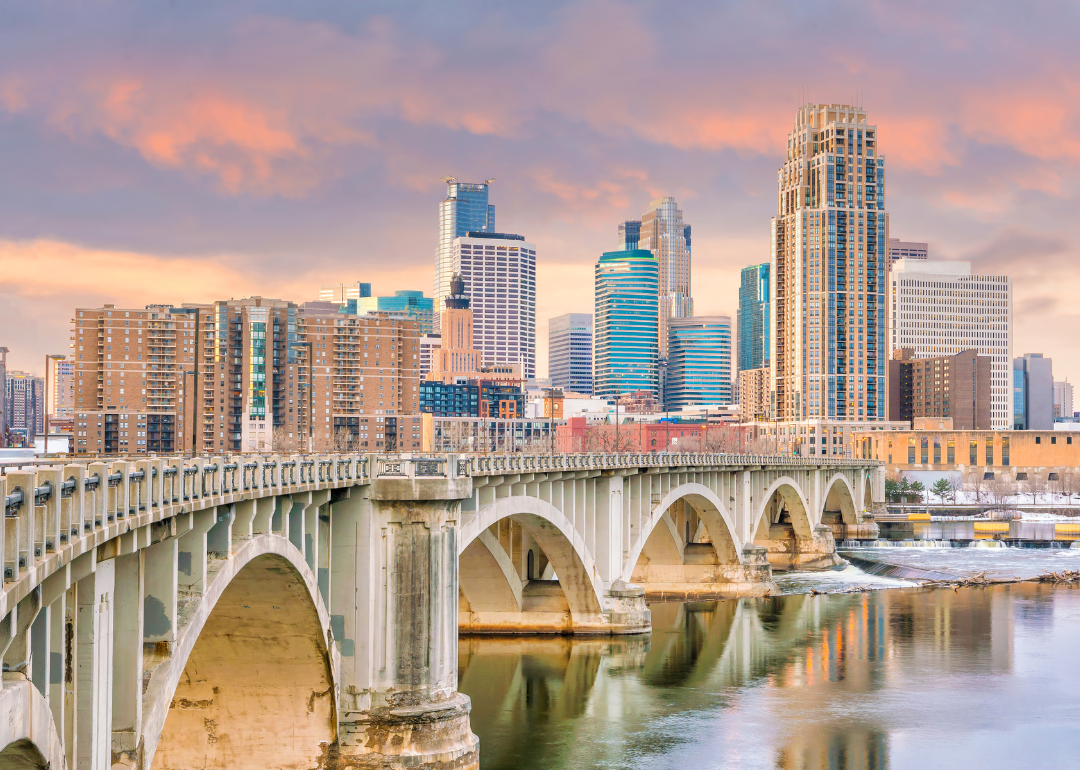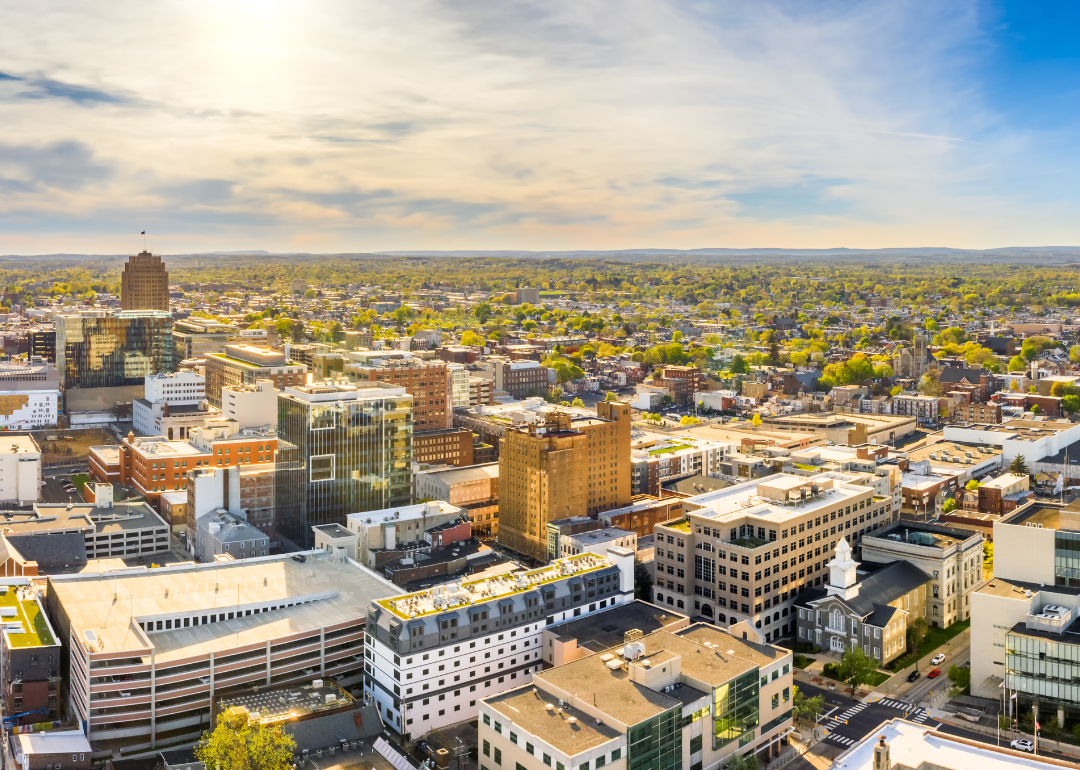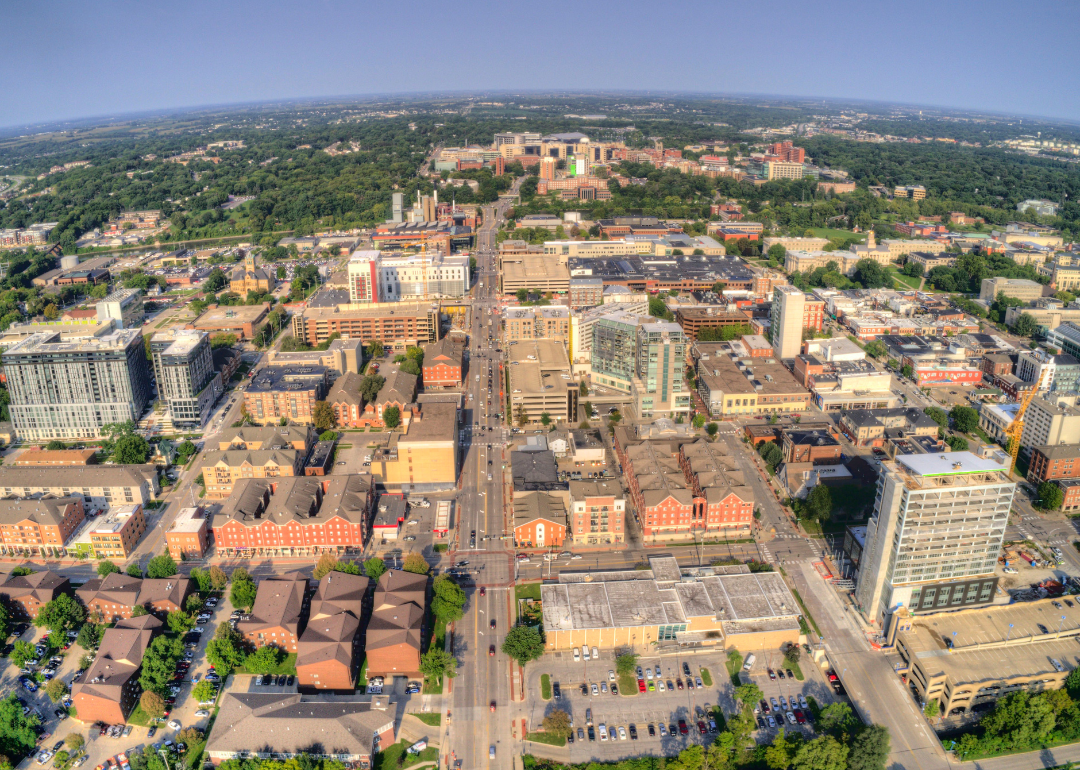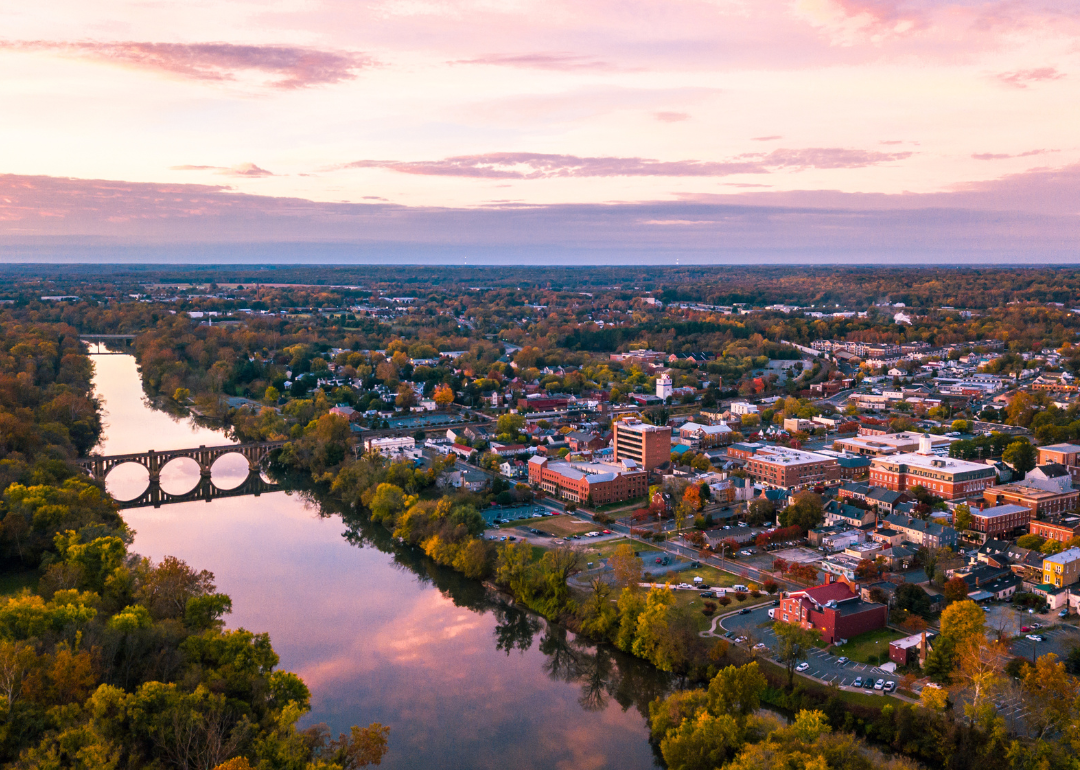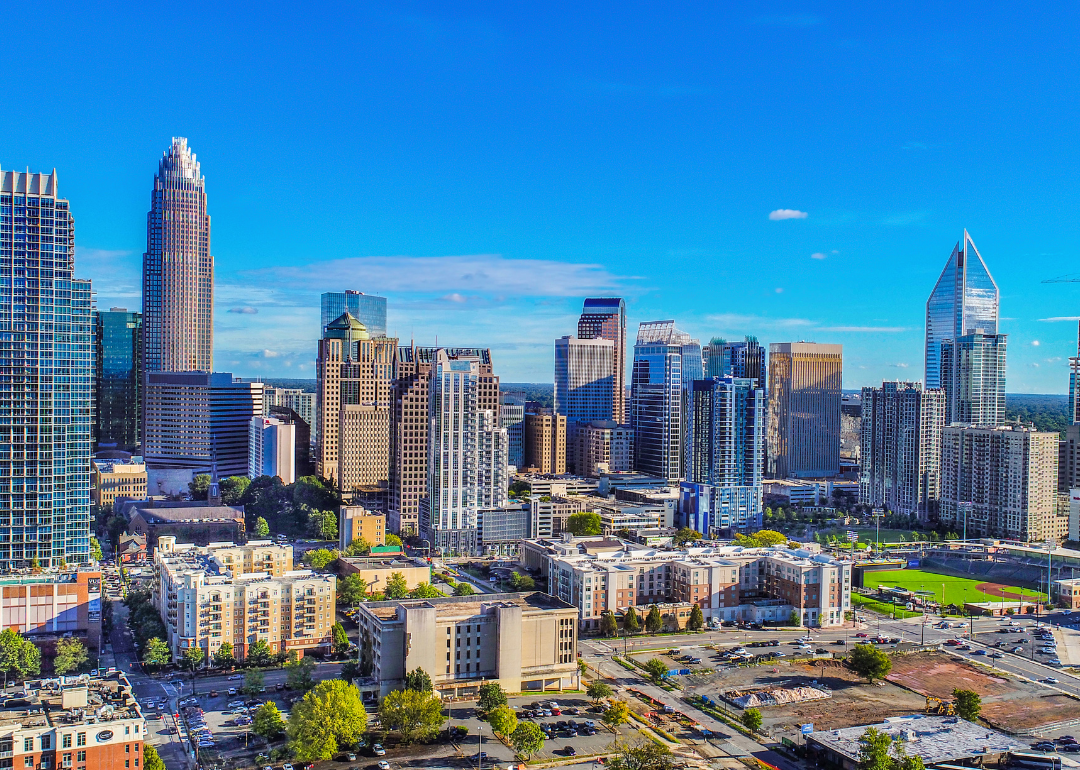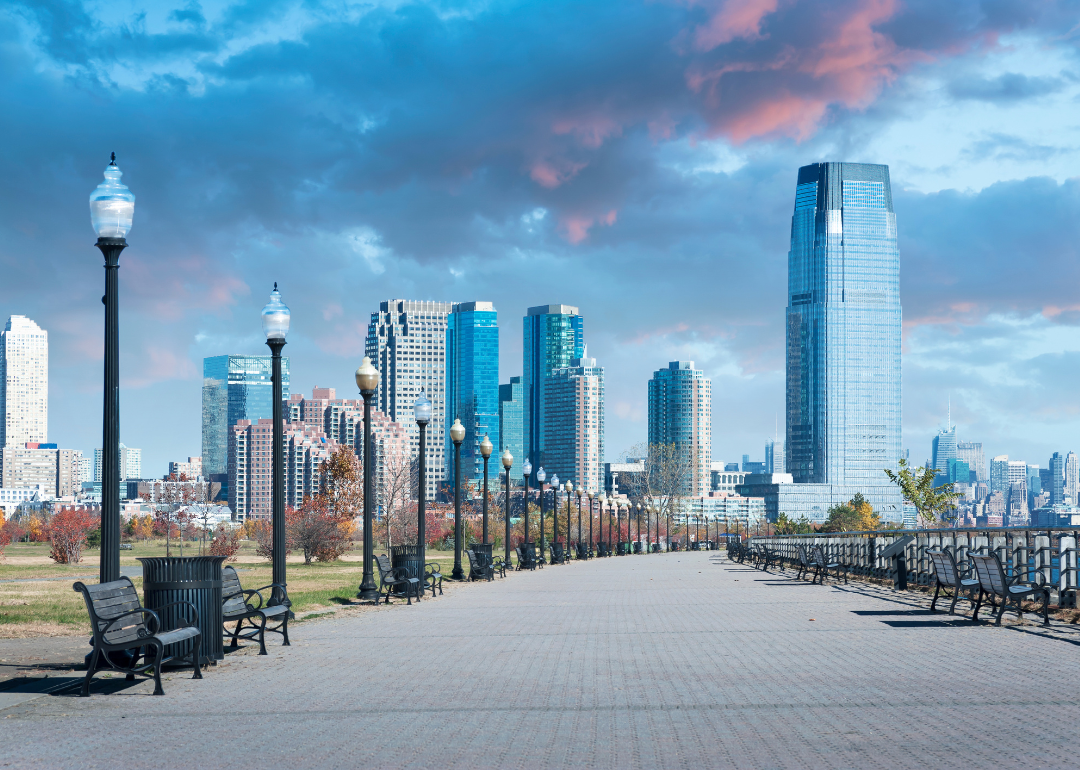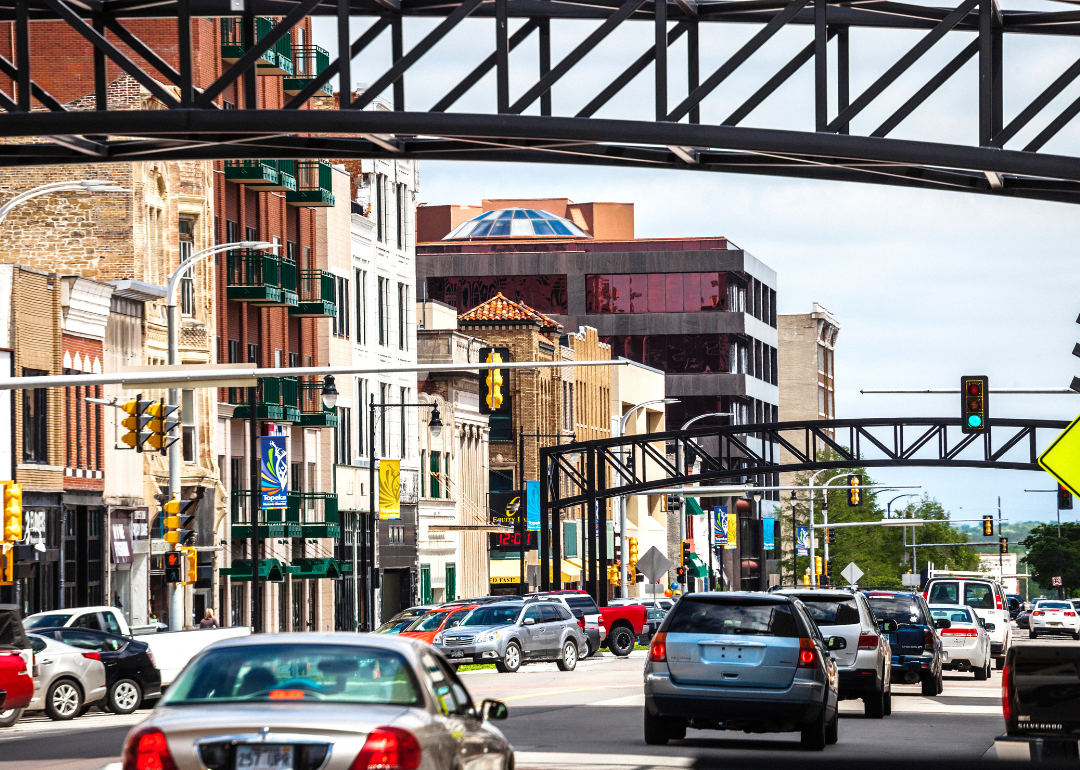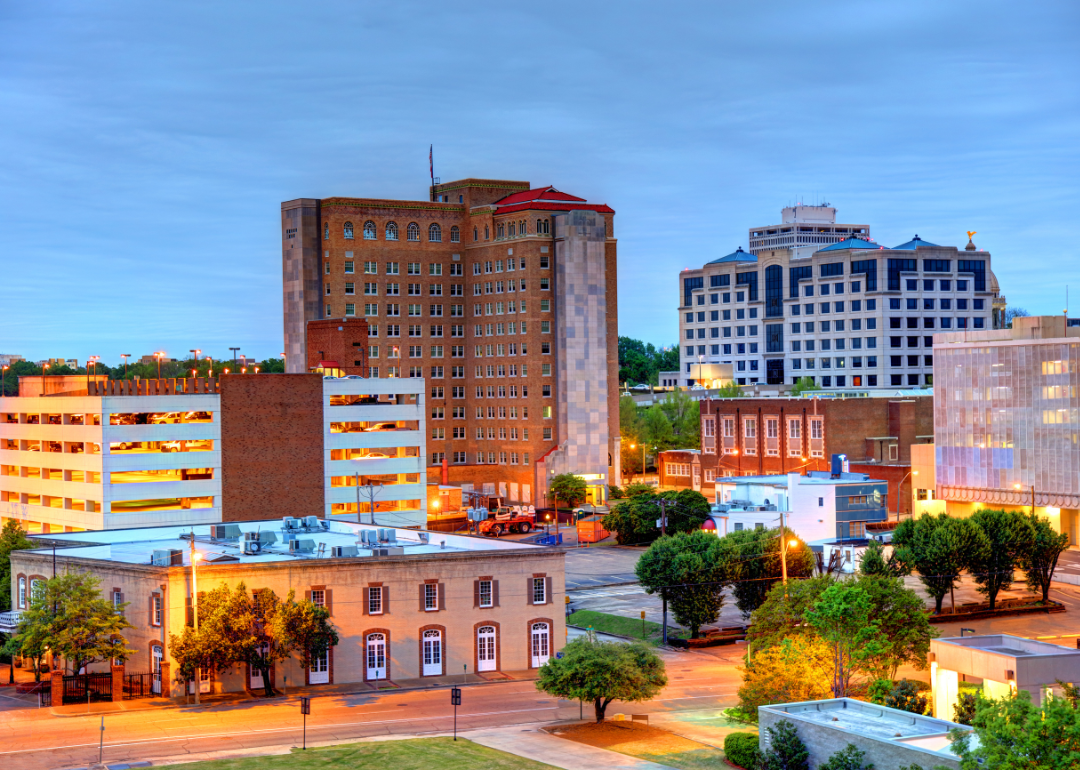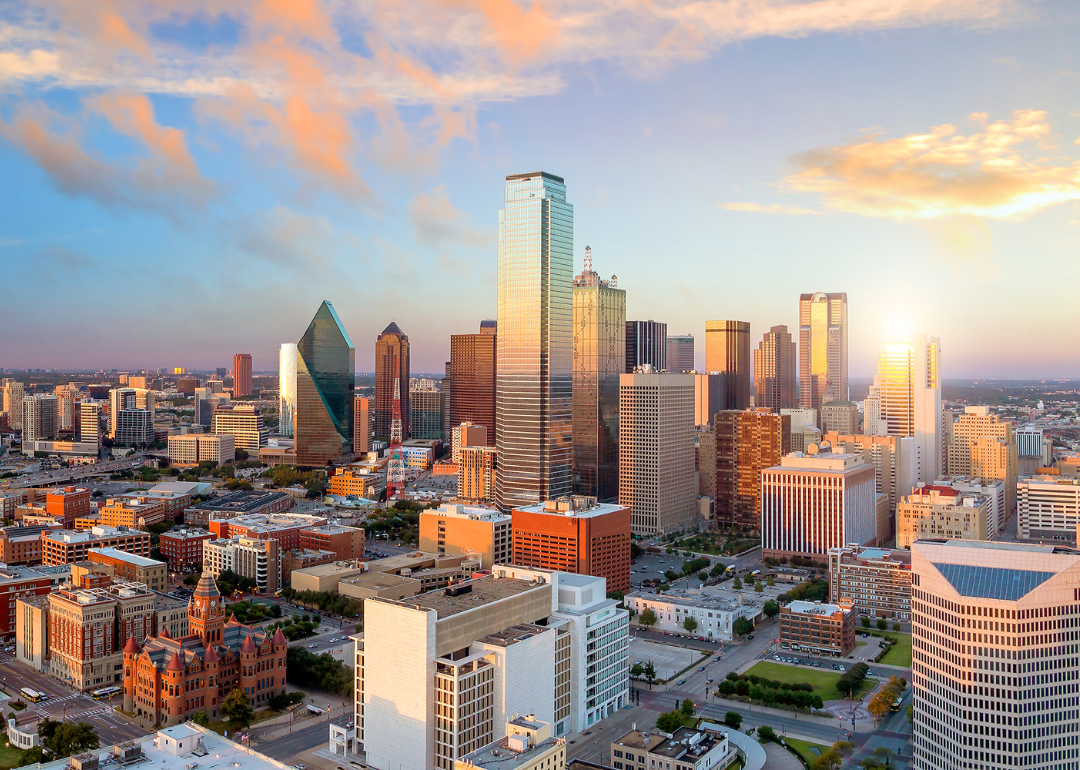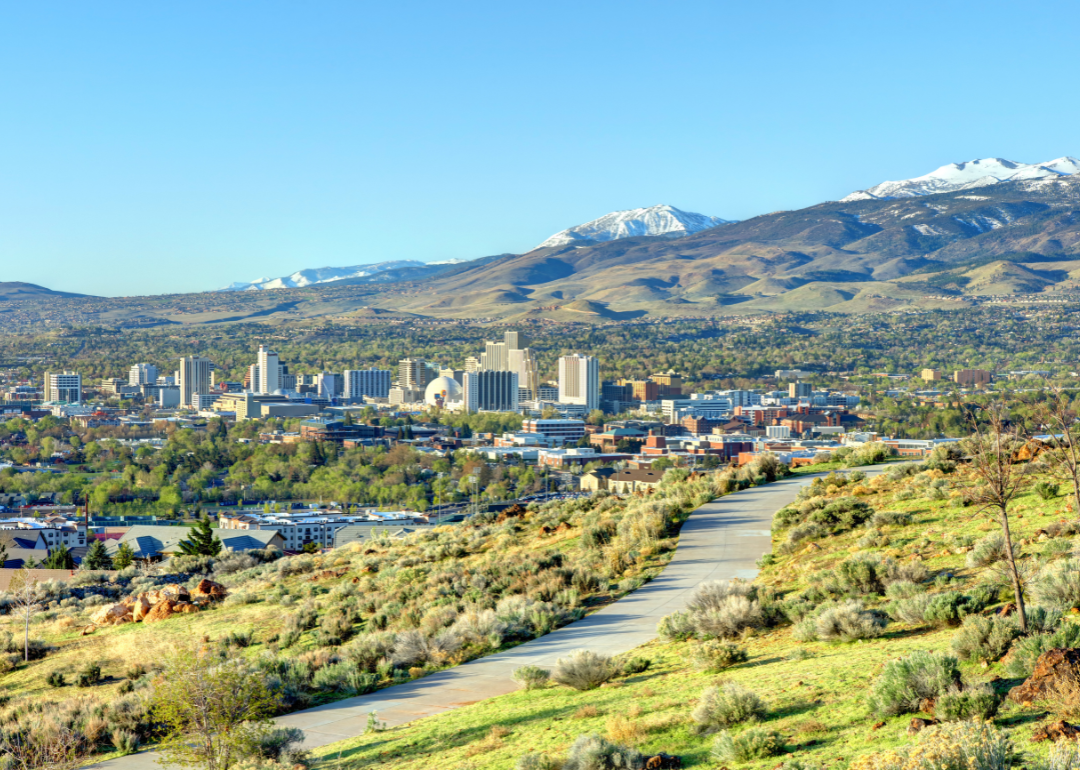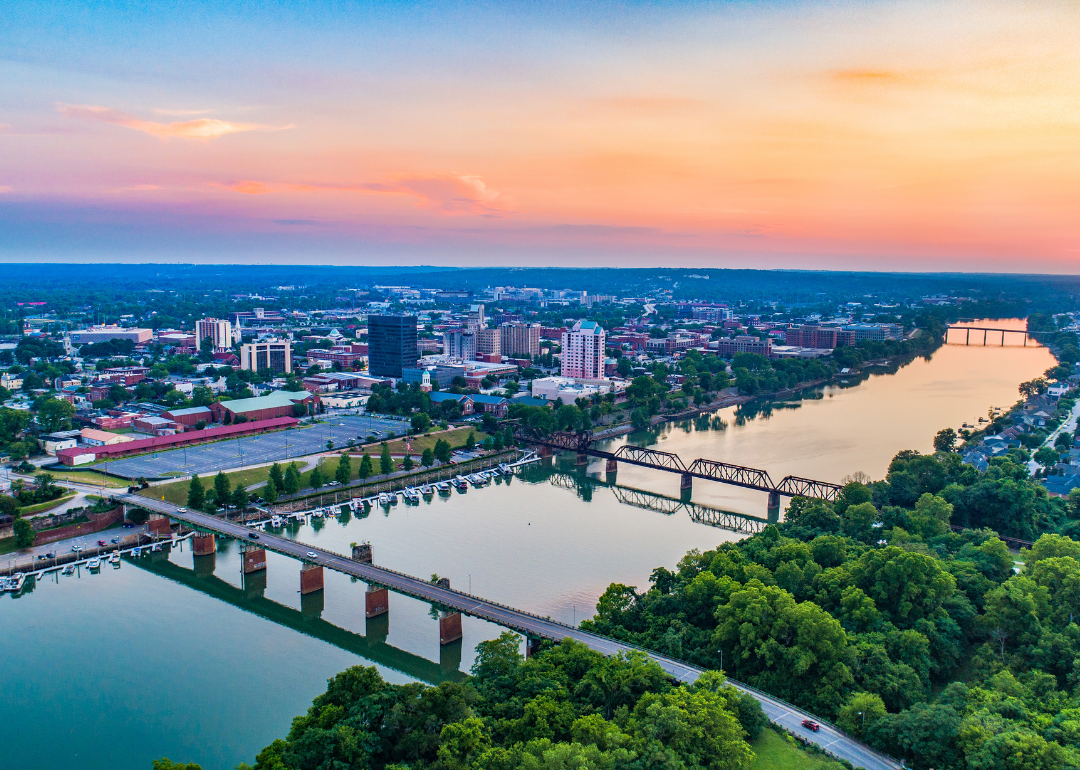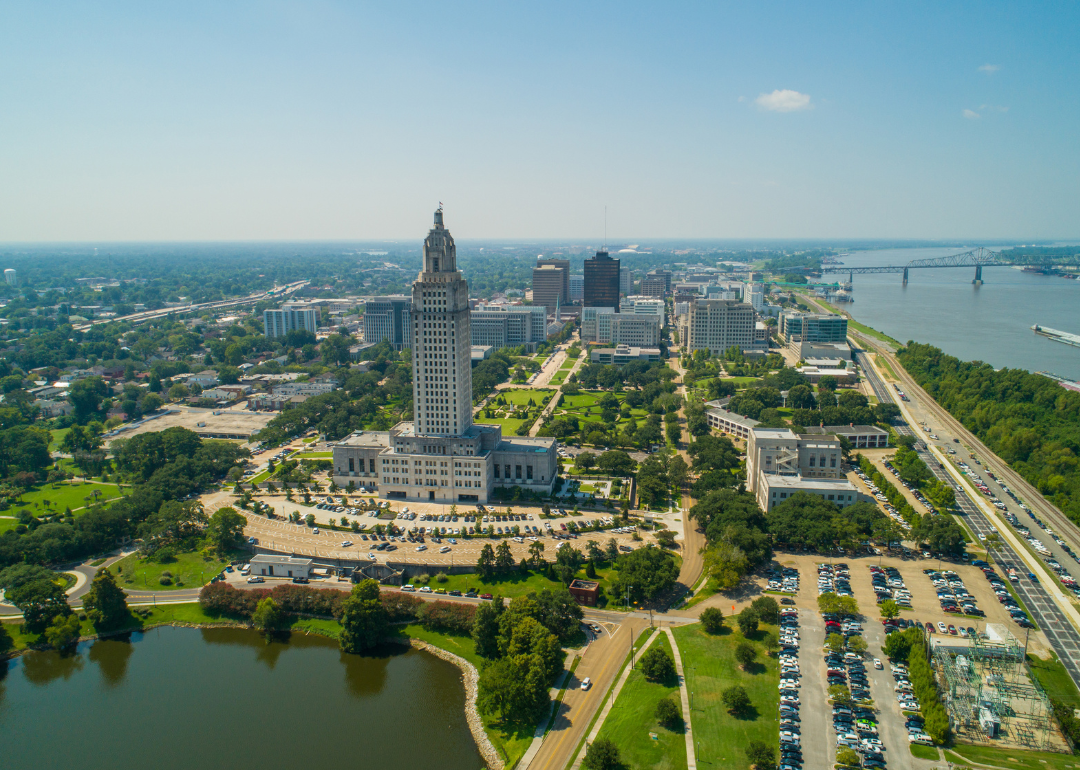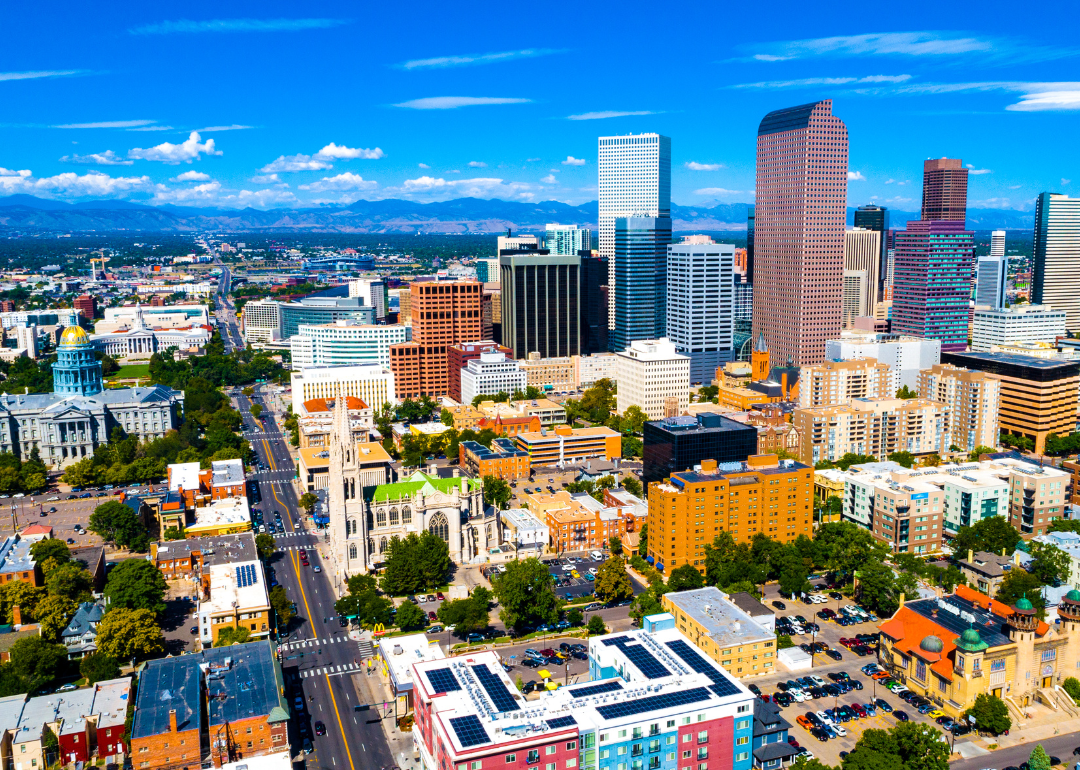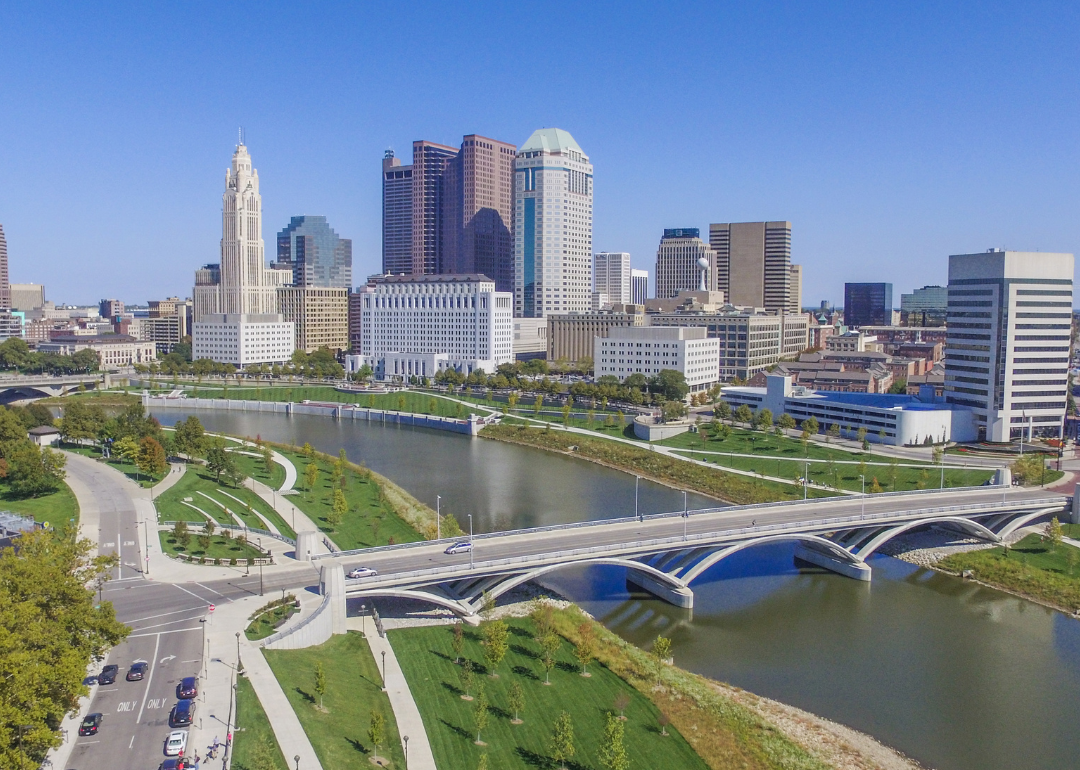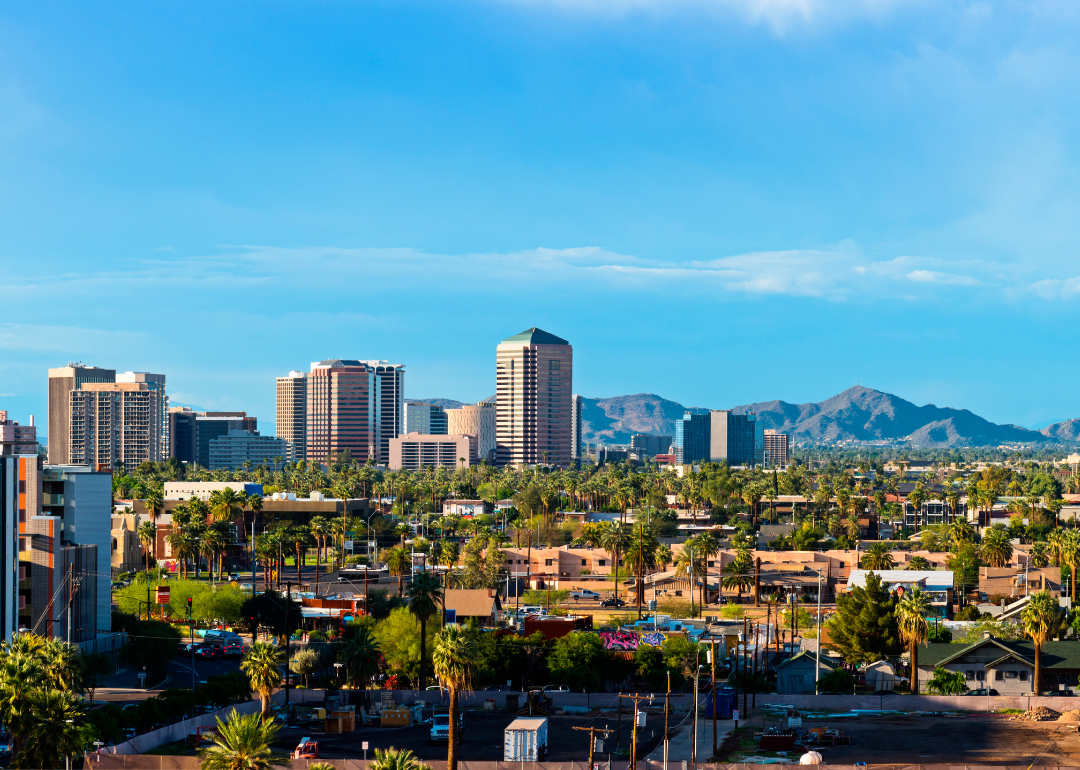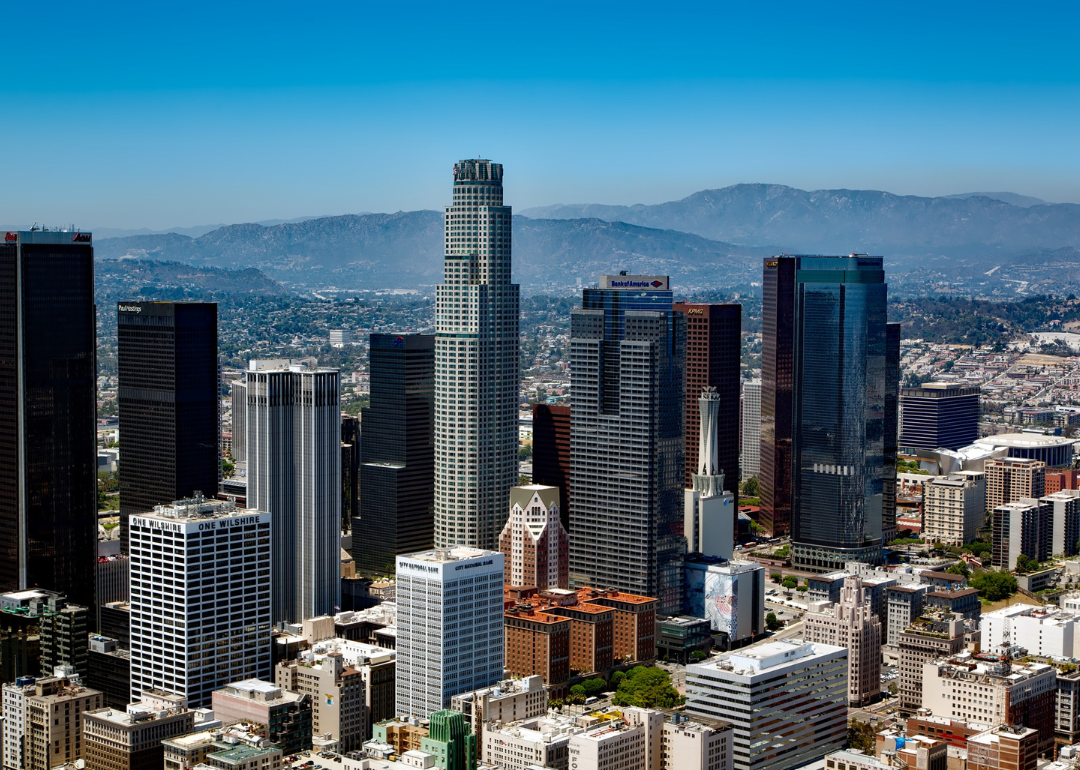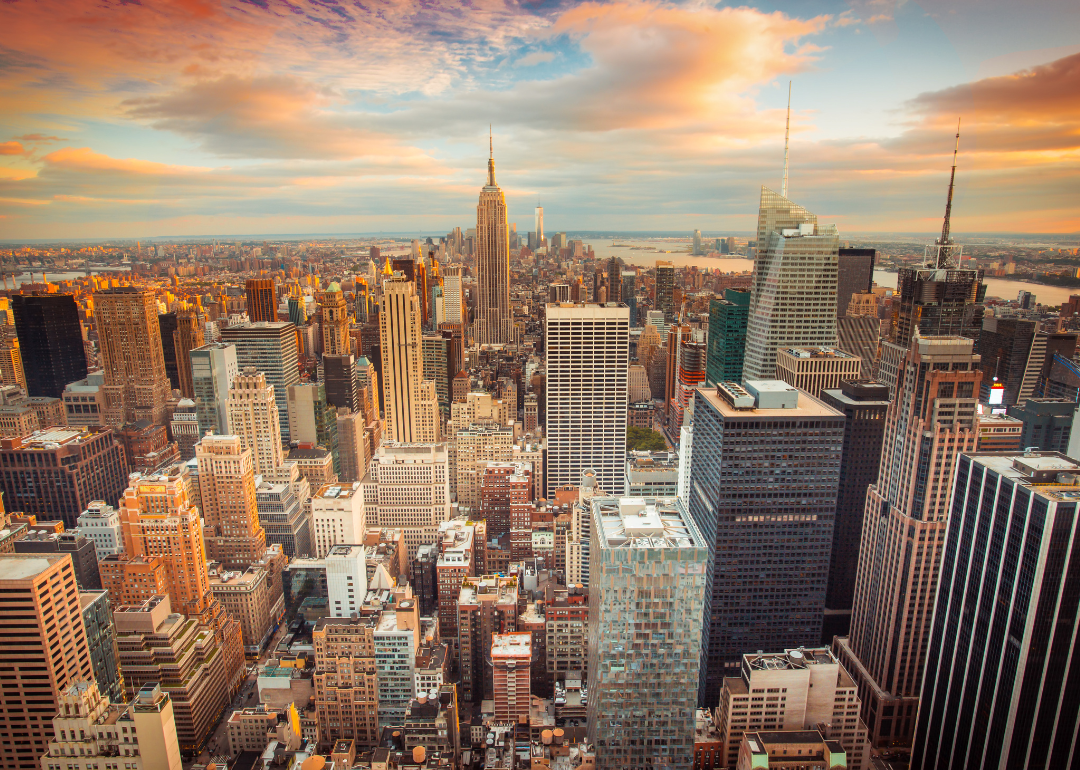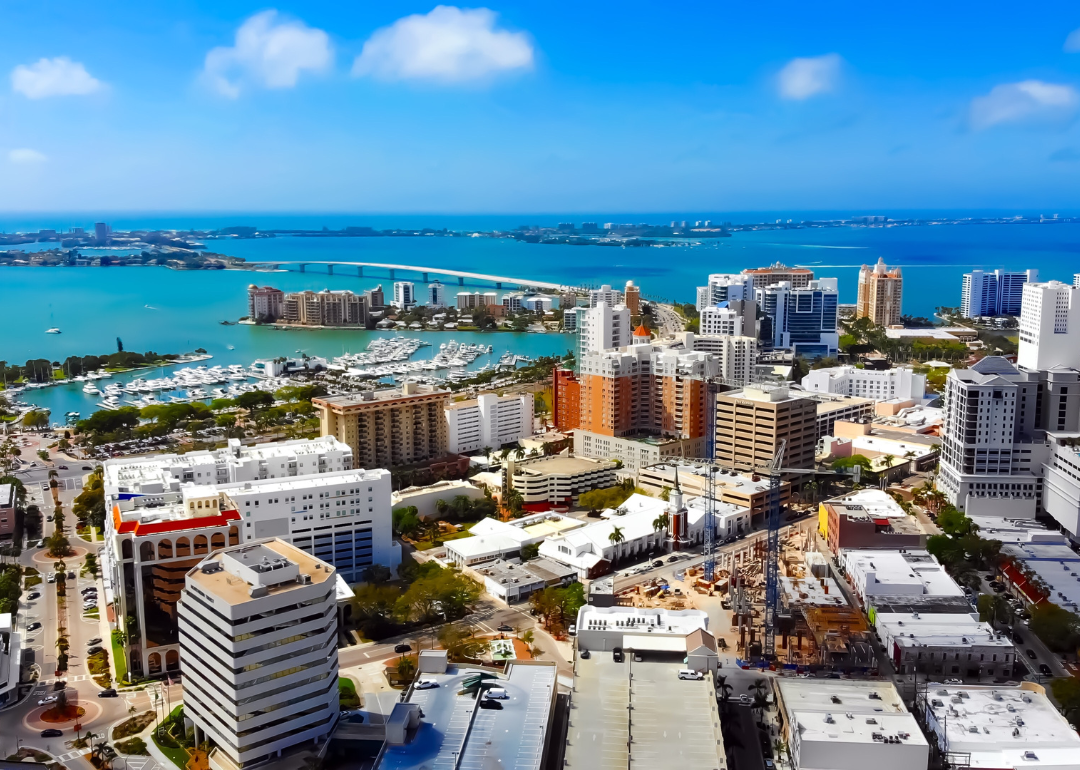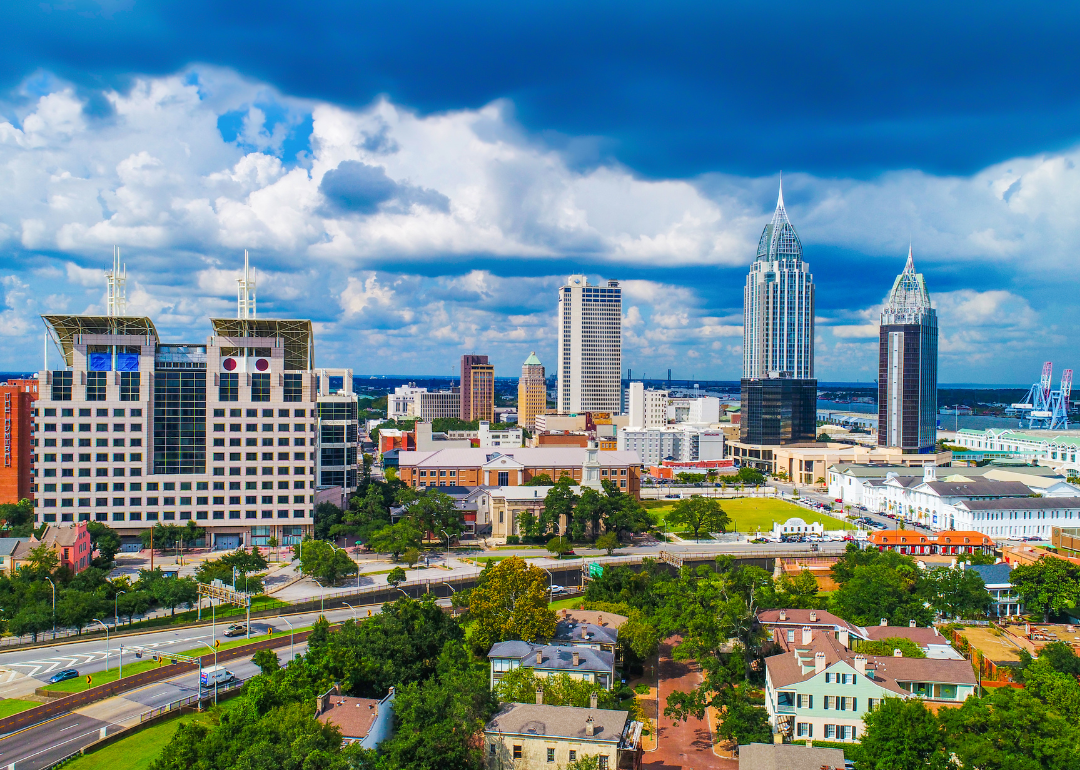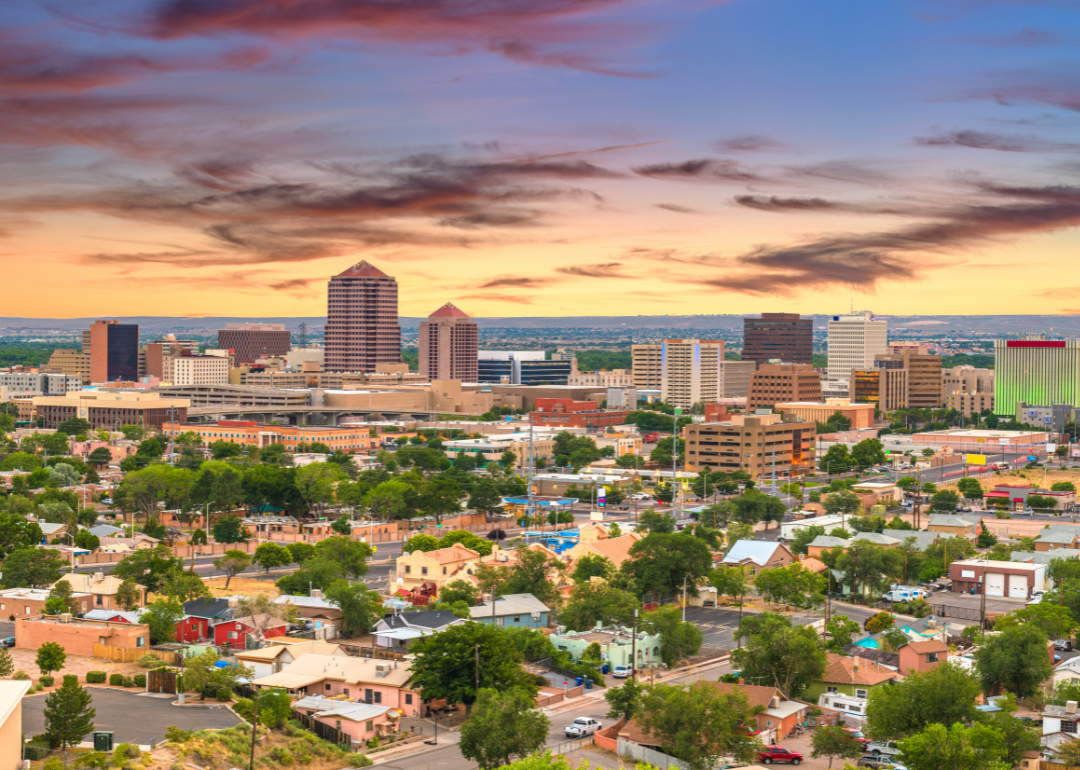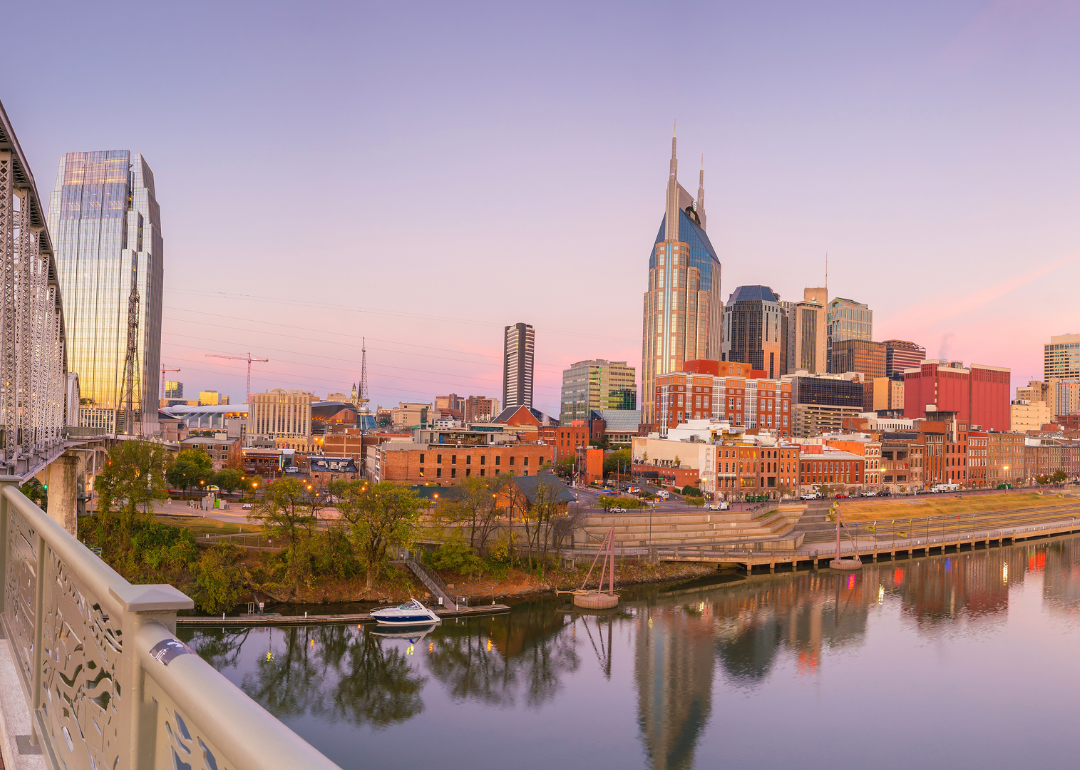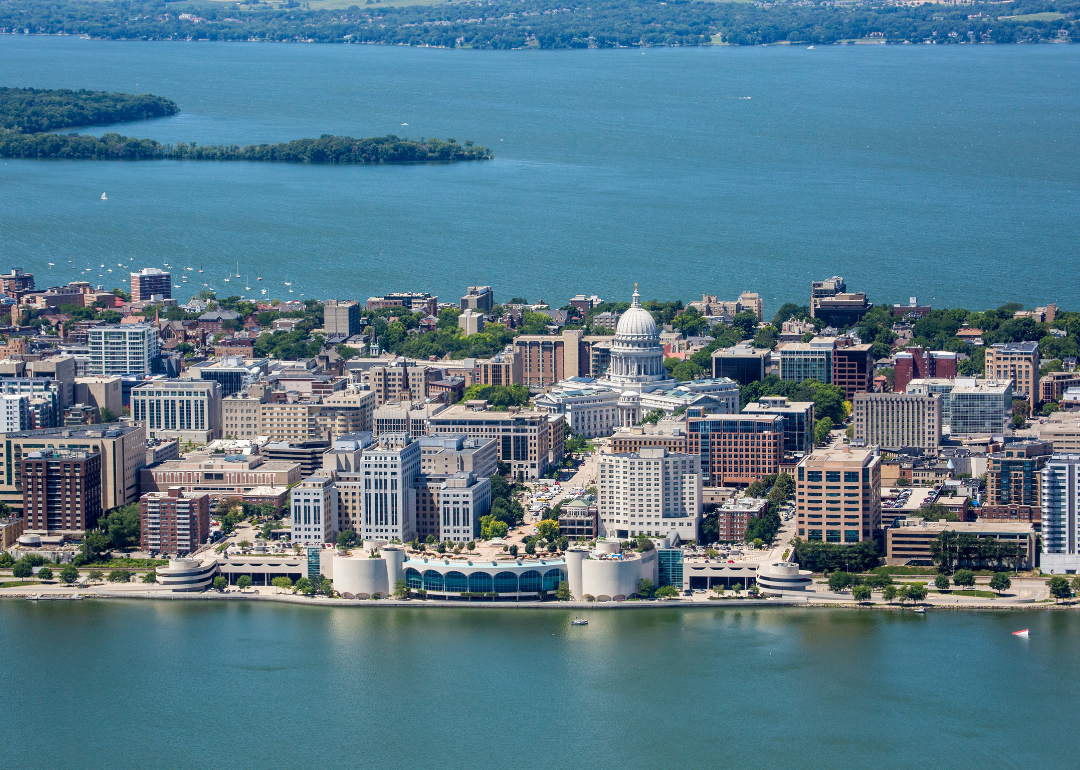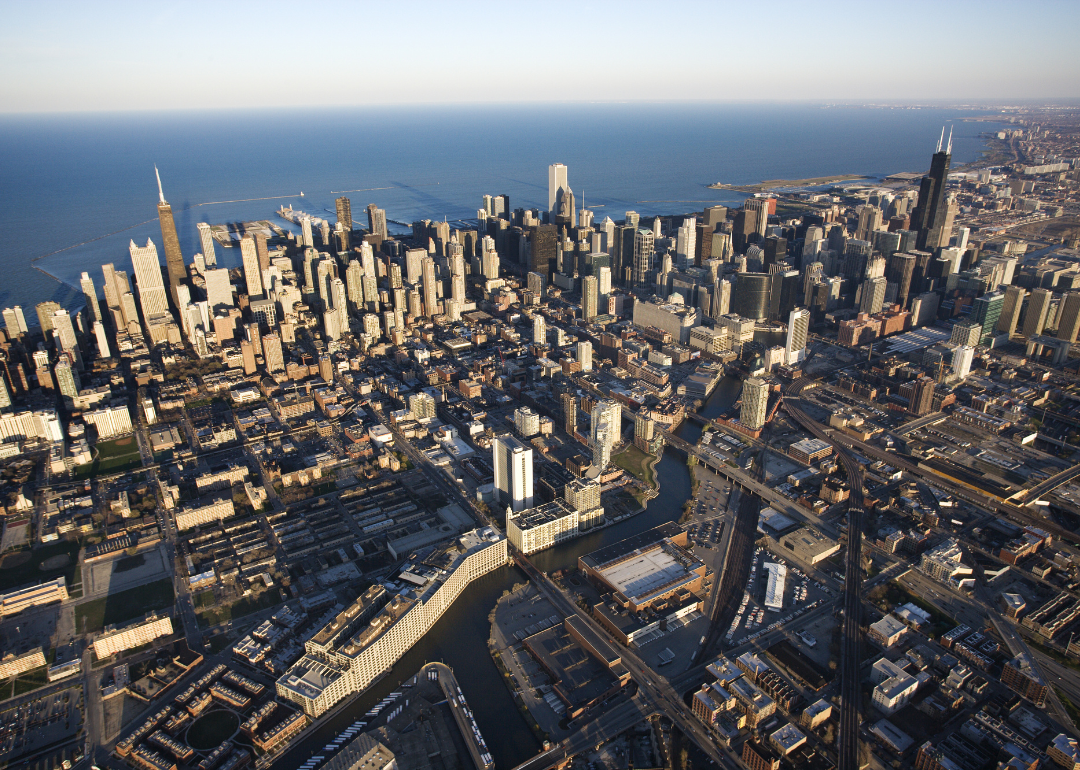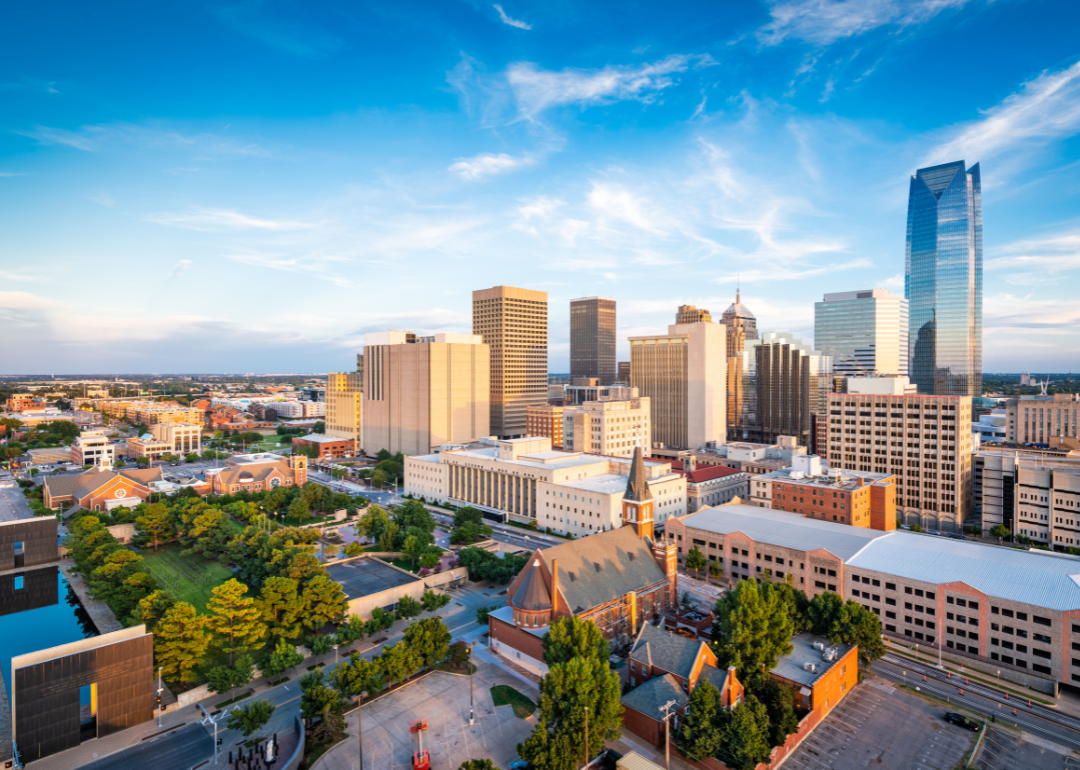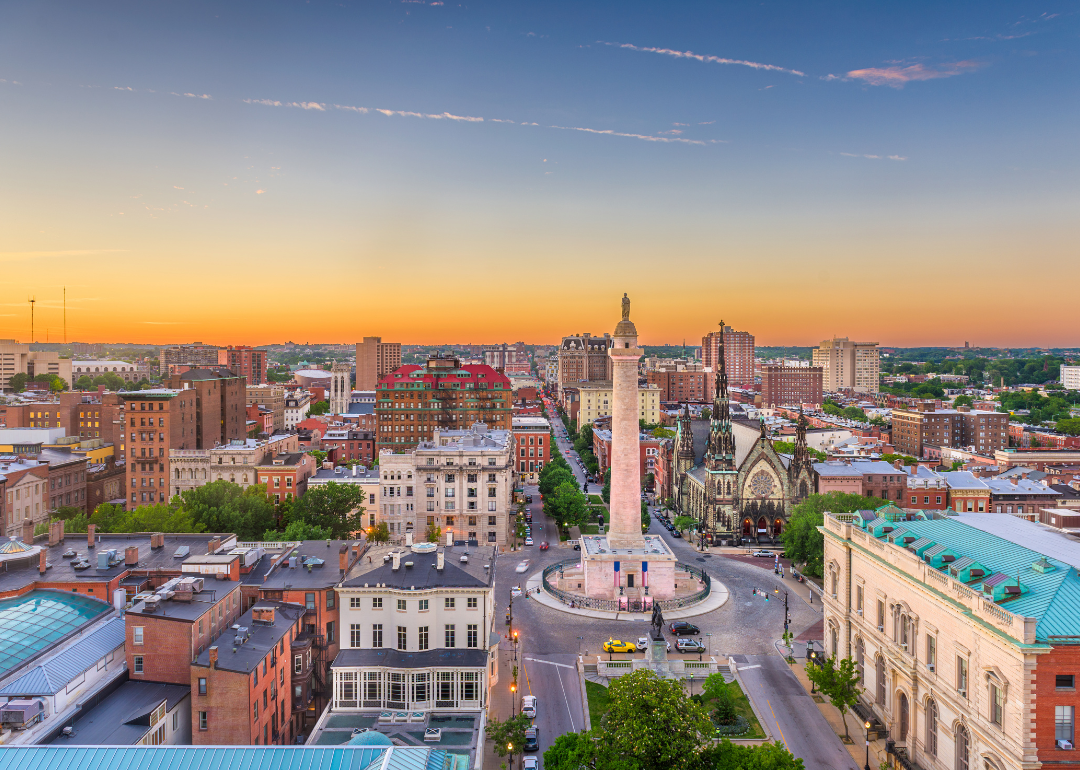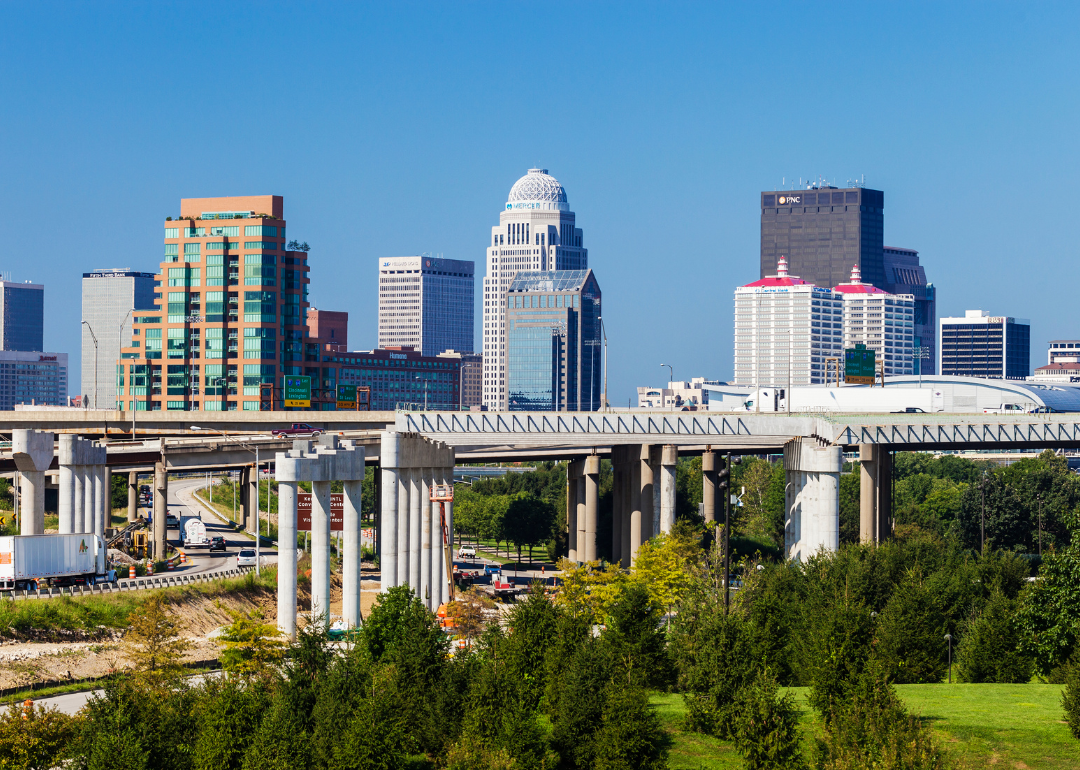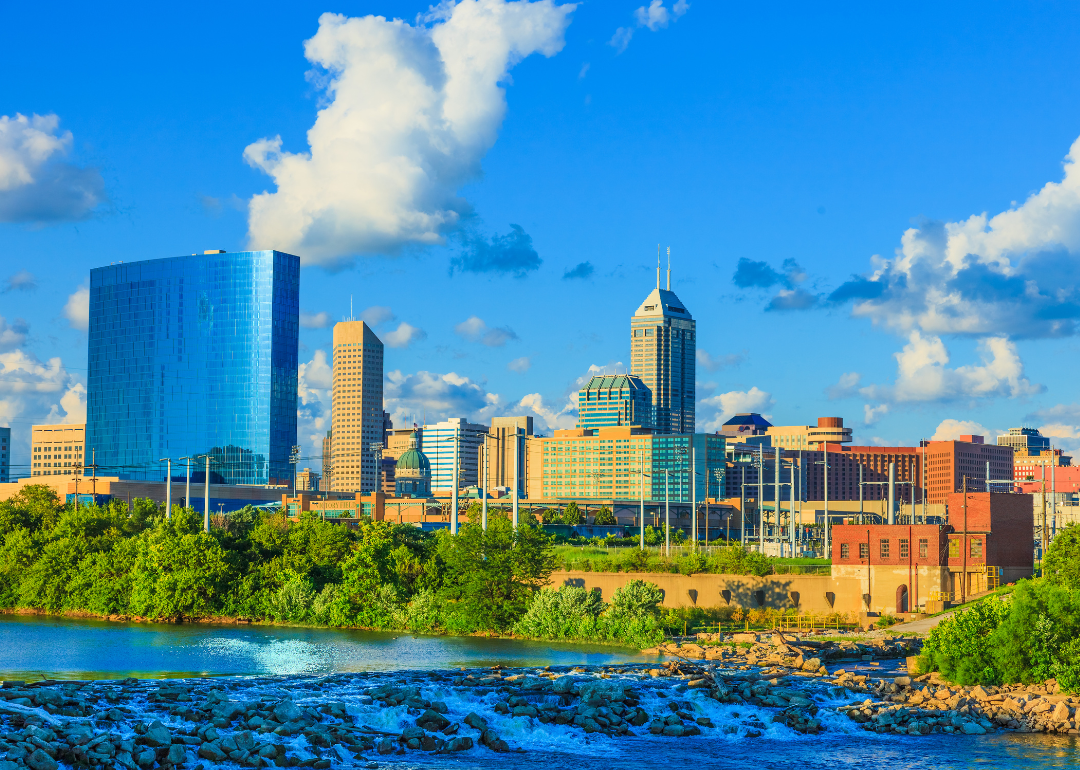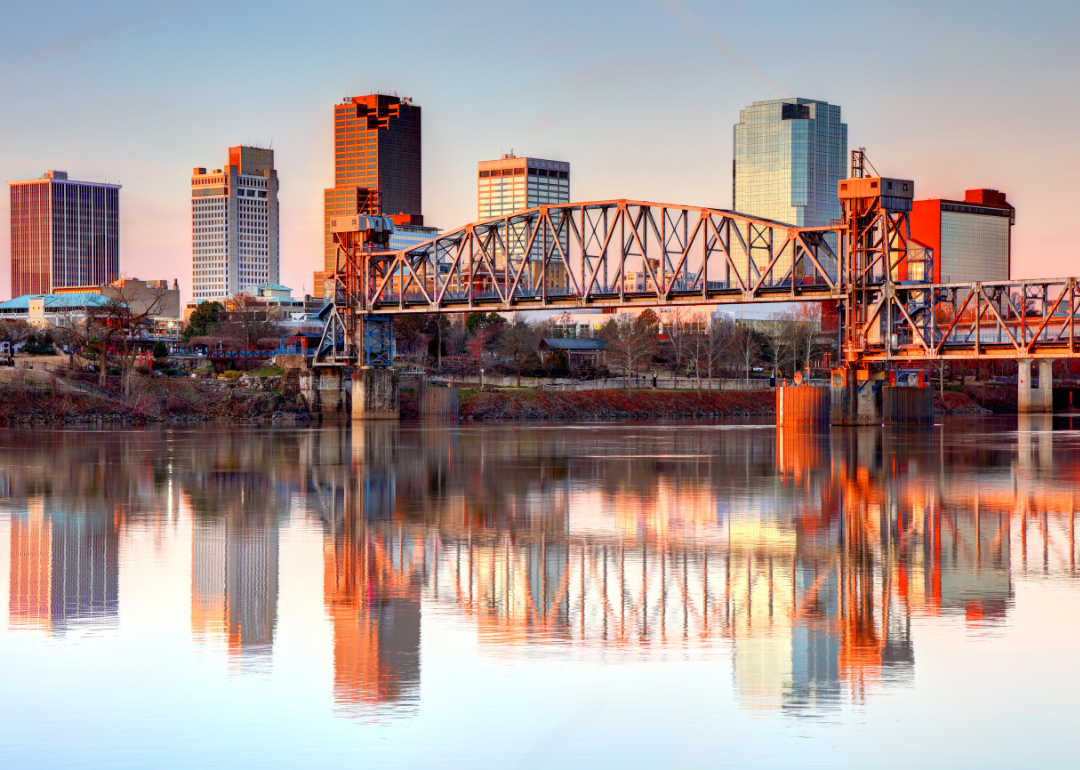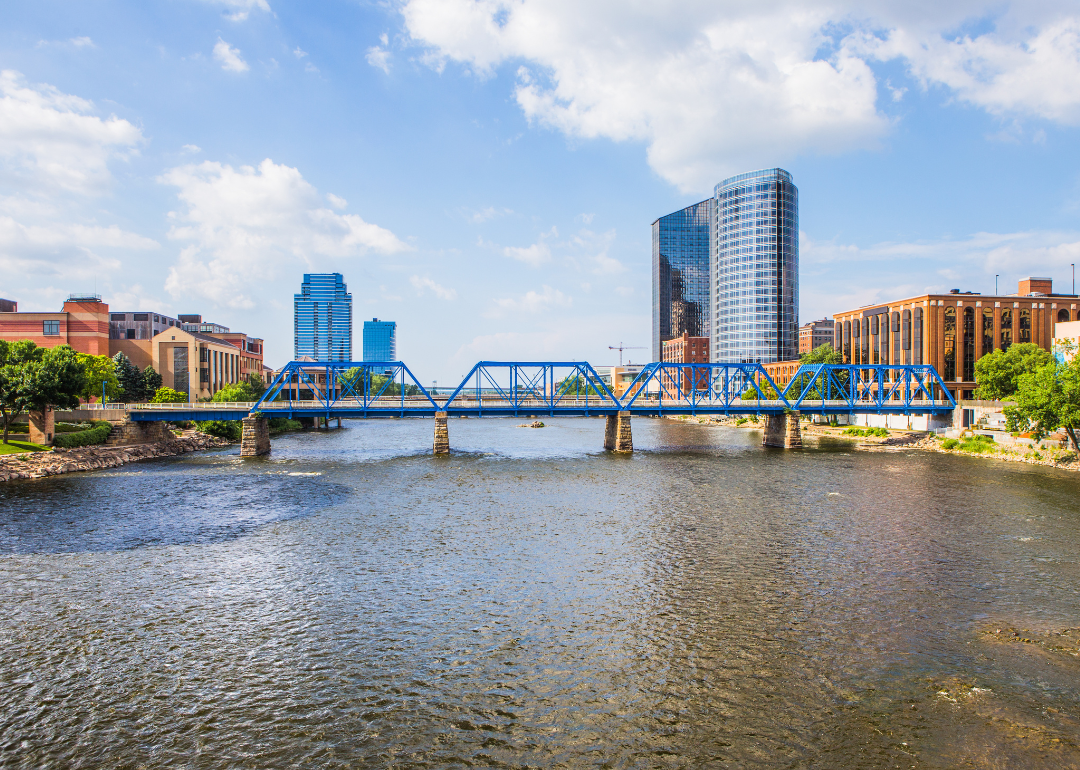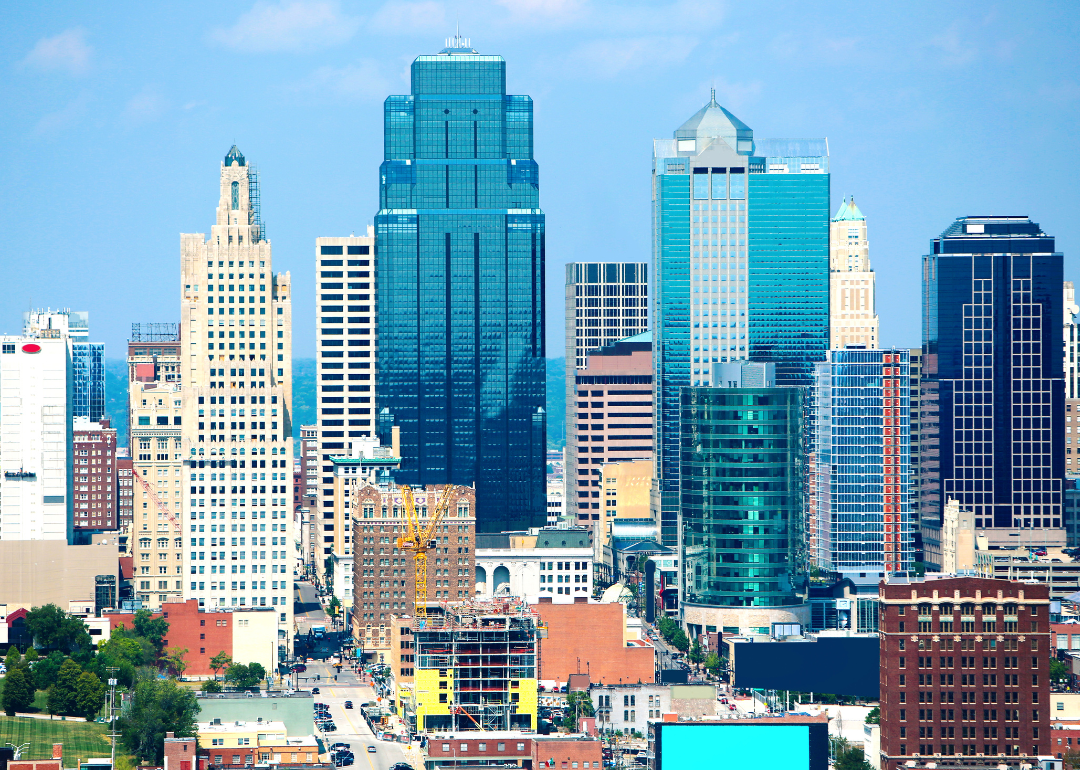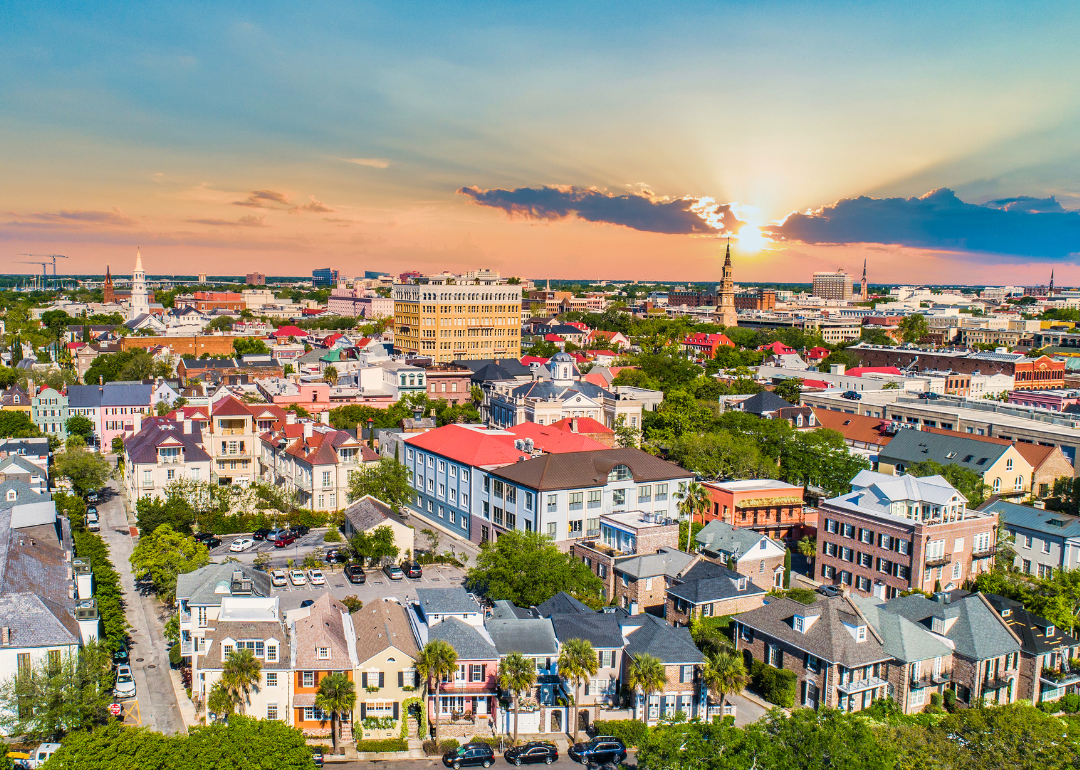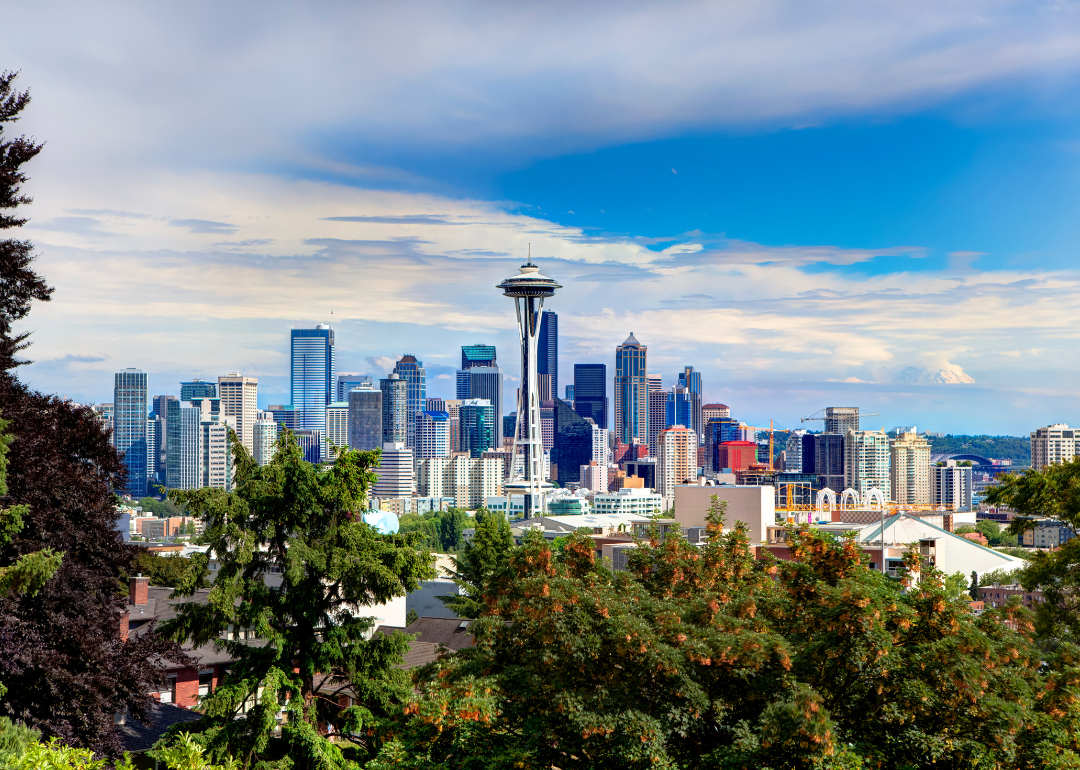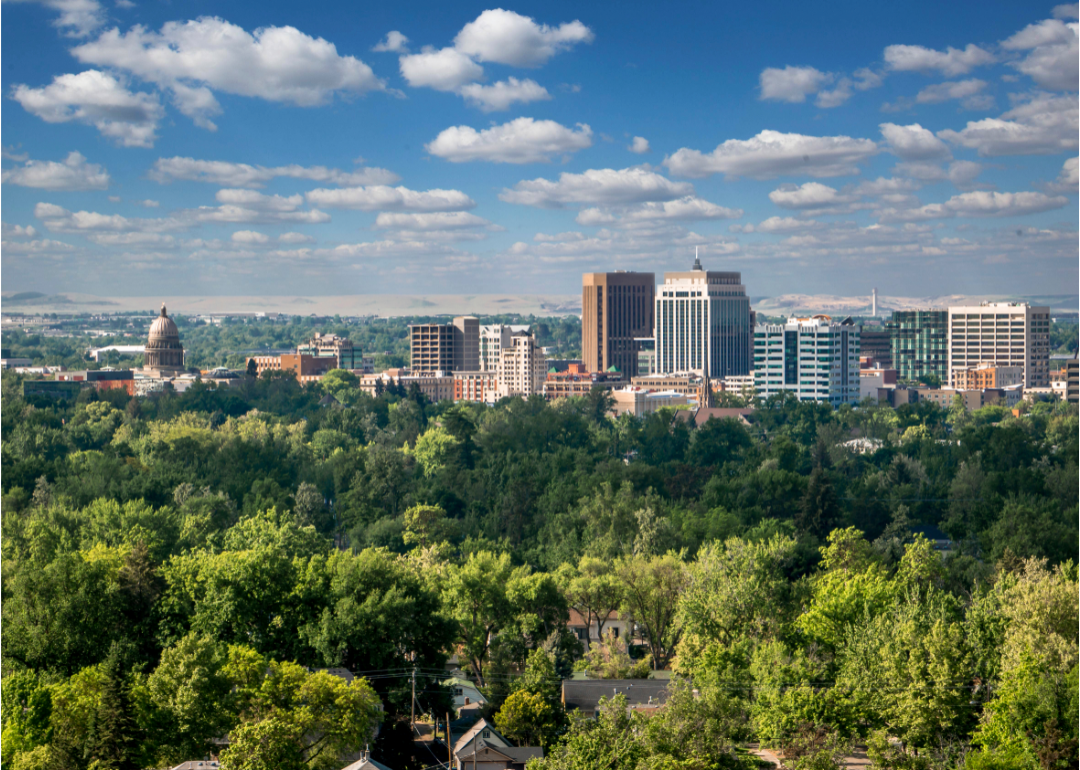Business
14 years later, the effects of the 2008 bailout are still being counted
Published
1 year agoon
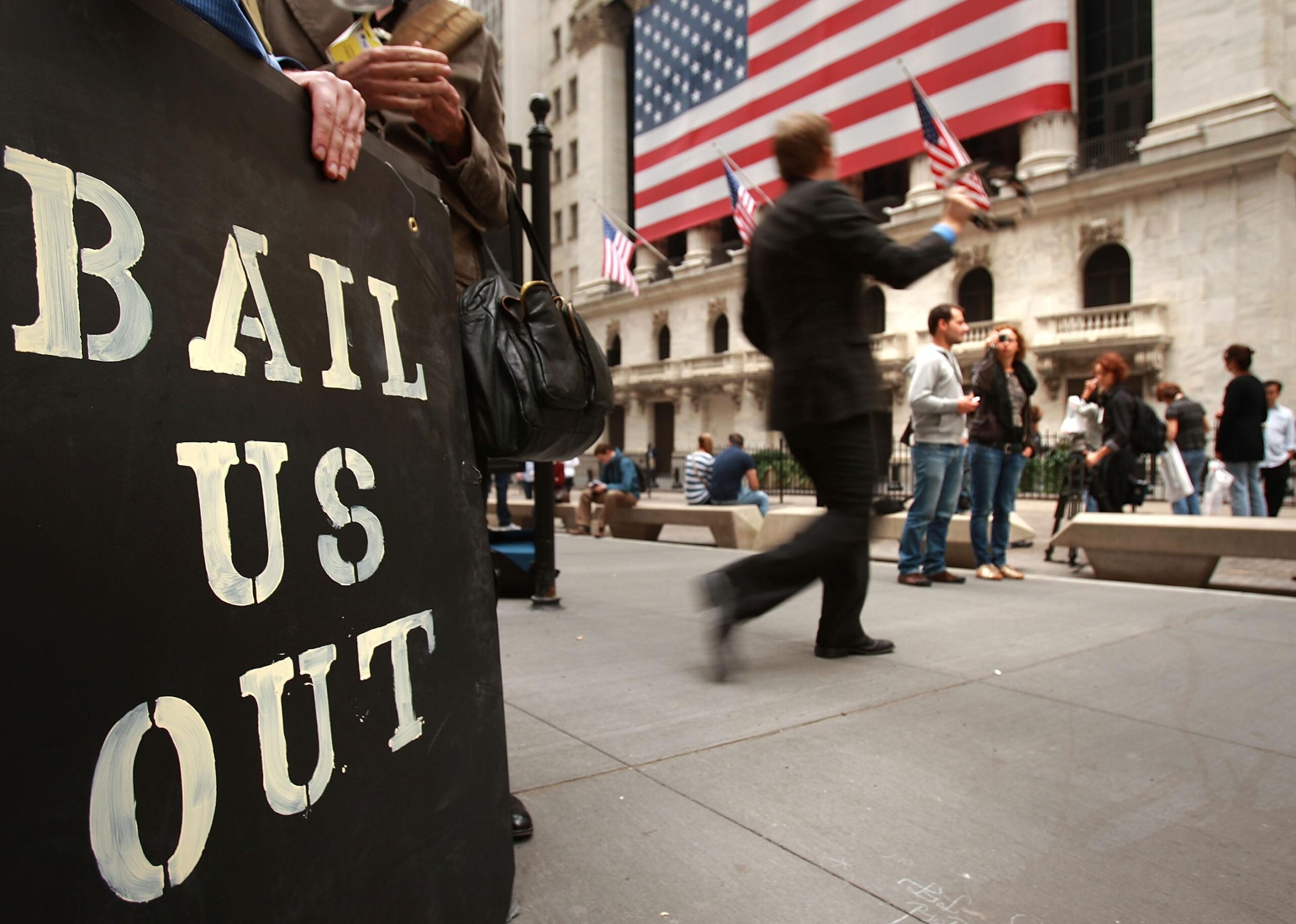
It was Monday afternoon in late September 2008 when congressional leaders rejected an initial plan to bail out America’s failing banks, plummeting the Dow Jones Index and wiping a record $1.2 trillion from American businesses.
The Great Recession was not just an American crisis but a global one in which developed countries’ interconnected banking systems were stressed simultaneously. World leaders eventually capitulated to calls by U.S. Treasury Secretary Henry Paulson and others to pump banks with capital to avoid economic collapse.
The idea of taxpayers bailing out Wall Street for short-sighted lending practices was wildly unpopular. One Republican congressman referred to the proposal as “a huge cow patty with a piece of marshmallow stuck in the middle of it.” Still, leaders worried the U.S. could plunge into a second Great Depression without action.
Packaged with financial support for homeowners and stimulus for automakers meant to prevent job losses, the concept eventually won approval in October 2008 when Congress passed the Troubled Asset Relief Program and former President George W. Bush signed the measure into law.
Stacker analyzed data about the 2008 Troubled Asset Relief Program compiled by ProPublica to see which states’ businesses have been the most responsible in paying their loan money 14 years later and found that 34 states have outstanding or failed investments that will not be paid back.
TARP was massive in its potential scope, authorizing up to $700 billion in funding, though the Treasury utilized only a fraction. The commitments broke down into $250 billion for banks, $27 billion for credit markets, $82 billion for the automotive industry, $70 billion to support the insurance giant American International Group, and $46 billion to help Americans avoid foreclosure on their homes.
Congress later passed legislation lowering the disbursement cap for TARP to $475 billion in 2010 and lost its authority to approve any new bailout commitments that same year.
By 2013, the watchdog group overseeing TARP and enforcing its rules pursued charges against 107 senior bank officials alleged to have misused bailout funds, most of whom received prison time, according to an analysis by the Washington Post. In 2016, TARP wound down its investments, including in companies such as AIG, declaring it had recouped disbursements.
In total, $635 billion has been distributed; $17 billion are considered lost or a failed investment.
Funds that were committed to helping Americans avoid foreclosure and were never meant to be repaid were ongoing up to the onset of the COVID-19 pandemic, which saw the U.S. government issue $800 billion in Paycheck Protection Program loans intended to keep Americans employed—nearly all of which is expected to be forgiven.
Read on to see how businesses in your state repaid their funds—or didn’t.
You may also like: Famous consumer brands that no longer exist
![]()
Canva
#34. Minnesota
– Percent of total disbursement unrepaid: 0.03%
– Unrepaid bailout amount: $2.2 million (out of $7.4 billion disbursed to Minnesota)
– Per capita disbursement: $1,298 with $0.38 lost per capita
– Single biggest loan: $6.6 billion to U.S. Bancorp
Canva
#33. Pennsylvania
– Percent of total disbursement unrepaid: 0.08%
– Unrepaid bailout amount: $8.5 million (out of $10.2 billion disbursed to Pennsylvania)
– Per capita disbursement: $787 with $0.66 lost per capita
– Single biggest loan: $7.6 billion to PNC Financial Services
Canva
#32. Iowa
– Percent of total disbursement unrepaid: 0.09%
– Unrepaid bailout amount: $3.2 million (out of $3.6 billion disbursed to Iowa)
– Per capita disbursement: $1,124 with $1.00 lost per capita
– Single biggest loan: $3.4 billion to Wells Fargo Bank, NA
Canva
#31. Virginia
– Percent of total disbursement unrepaid: 0.12%
– Unrepaid bailout amount: $89.2 million (out of $75.9 billion disbursed to Virginia)
– Per capita disbursement: $8,782 with $10.32 lost per capita
– Single biggest loan: $71.6 billion to Freddie Mac
Canva
#30. North Carolina
– Percent of total disbursement unrepaid: 0.12%
– Unrepaid bailout amount: $59.2 million (out of $49.4 billion disbursed to North Carolina)
– Per capita disbursement: $4,683 with $5.61 lost per capita
– Single biggest loan: $45.0 billion to Bank of America
You may also like: Most popular department stores in America
Canva
#29. New Jersey
– Percent of total disbursement unrepaid: 0.19%
– Unrepaid bailout amount: $8.1 million (out of $4.3 billion disbursed to New Jersey)
– Per capita disbursement: $465 with $0.88 lost per capita
– Single biggest loan: $3.2 billion to JPMorgan Chase subsidiaries
Canva
#28. Kansas
– Percent of total disbursement unrepaid: 0.19%
– Unrepaid bailout amount: $0.3 million (out of $142.4 million disbursed to Kansas)
– Per capita disbursement: $49 with $0.09 lost per capita
– Single biggest loan: $36.3 million to Fidelity Financial Corp
Canva
#27. Mississippi
– Percent of total disbursement unrepaid: 0.30%
– Unrepaid bailout amount: $2.0 million (out of $665.5 million disbursed to Mississippi)
– Per capita disbursement: $226 with $0.68 lost per capita
– Single biggest loan: $215.0 million to Trustmark Corp
Canva
#26. Texas
– Percent of total disbursement unrepaid: 0.31%
– Unrepaid bailout amount: $15.9 million (out of $5.2 billion disbursed to Texas)
– Per capita disbursement: $176 with $0.54 lost per capita
– Single biggest loan: $2.3 billion to Comerica Incorporated
Canva
#25. Nevada
– Percent of total disbursement unrepaid: 0.41%
– Unrepaid bailout amount: $1.4 million (out of $340.1 million disbursed to Nevada)
– Per capita disbursement: $108 with $0.44 lost per capita
– Single biggest loan: $196.2 million to Nevada Affordable Housing Assistance Corporation
You may also like: 50 car companies that no longer exist
Canva
#24. Georgia
– Percent of total disbursement unrepaid: 0.45%
– Unrepaid bailout amount: $29.6 million (out of $6.7 billion disbursed to Georgia)
– Per capita disbursement: $616 with $2.74 lost per capita
– Single biggest loan: $4.9 billion to SunTrust
Canva
#23. Louisiana
– Percent of total disbursement unrepaid: 0.50%
– Unrepaid bailout amount: $2.7 million (out of $537.8 million disbursed to Louisiana)
– Per capita disbursement: $116 with $0.58 lost per capita
– Single biggest loan: $300.0 million to Citizens Republic Bancorp
Canva
#22. Colorado
– Percent of total disbursement unrepaid: 0.73%
– Unrepaid bailout amount: $5.3 million (out of $728.6 million disbursed to Colorado)
– Per capita disbursement: $125 with $0.92 lost per capita
– Single biggest loan: $428.9 million to Specialized Loan Servicing LLC
Canva
#21. Ohio
– Percent of total disbursement unrepaid: 0.80%
– Unrepaid bailout amount: $69.5 million (out of $8.7 billion disbursed to Ohio)
– Per capita disbursement: $738 with $5.90 lost per capita
– Single biggest loan: $3.4 billion to Fifth Third Bancorp
Canva
#20. Arizona
– Percent of total disbursement unrepaid: 0.85%
– Unrepaid bailout amount: $2.6 million (out of $309.3 million disbursed to Arizona)
– Per capita disbursement: $43 with $0.36 lost per capita
– Single biggest loan: $296.1 million to Arizona (Home) Foreclosure Prevention Funding Corporation
You may also like: Retirement scams to watch out for
Canva
#19. California
– Percent of total disbursement unrepaid: 1.09%
– Unrepaid bailout amount: $362.8 million (out of $33.2 billion disbursed to California)
– Per capita disbursement: $847 with $9.25 lost per capita
– Single biggest loan: $25.0 billion to JPMorgan Chase
Canva
#18. New York
– Percent of total disbursement unrepaid: 1.36%
– Unrepaid bailout amount: $2.3 billion (out of $168.1 billion disbursed to New York)
– Per capita disbursement: $8,473 with $115.26 lost per capita
– Single biggest loan: $67.8 billion to AIG
Canva
#17. Florida
– Percent of total disbursement unrepaid: 1.52%
– Unrepaid bailout amount: $105.4 million (out of $6.9 billion disbursed to Florida)
– Per capita disbursement: $318 with $4.84 lost per capita
– Single biggest loan: $5.0 billion to PHH Mortgage, a subsidiary of Ocwen Financial Corporation
Canva
#16. Alabama
– Percent of total disbursement unrepaid: 1.68%
– Unrepaid bailout amount: $64.0 million (out of $3.8 billion disbursed to Alabama)
– Per capita disbursement: $754 with $12.70 lost per capita
– Single biggest loan: $3.5 billion to Regions Financial Corp.
Canva
#15. New Mexico
– Percent of total disbursement unrepaid: 1.86%
– Unrepaid bailout amount: $0.9 million (out of $48.1 million disbursed to New Mexico)
– Per capita disbursement: $23 with $0.42 lost per capita
– Single biggest loan: $35.5 million to Trinity Capital Corporation
You may also like: Cost of gold the year you were born
Canva
#14. Tennessee
– Percent of total disbursement unrepaid: 3.40%
– Unrepaid bailout amount: $54.6 million (out of $1.6 billion disbursed to Tennessee)
– Per capita disbursement: $230 with $7.83 lost per capita
– Single biggest loan: $866.5 million to First Horizon National
Canva
#13. Wisconsin
– Percent of total disbursement unrepaid: 4.64%
– Unrepaid bailout amount: $116.7 million (out of $2.5 billion disbursed to Wisconsin)
– Per capita disbursement: $427 with $19.80 lost per capita
– Single biggest loan: $1.7 billion to Marshall & Ilsley
Canva
#12. Illinois
– Percent of total disbursement unrepaid: 4.79%
– Unrepaid bailout amount: $260.5 million (out of $5.4 billion disbursed to Illinois)
– Per capita disbursement: $429 with $20.56 lost per capita
– Single biggest loan: $1.6 billion to Northern Trust
Canva
#11. Oklahoma
– Percent of total disbursement unrepaid: 5.05%
– Unrepaid bailout amount: $18.1 million (out of $358.4 million disbursed to Oklahoma)
– Per capita disbursement: $90 with $4.54 lost per capita
– Single biggest loan: $232.8 million to MidFirst Bank
Canva
#10. Maryland
– Percent of total disbursement unrepaid: 5.15%
– Unrepaid bailout amount: $23.6 million (out of $458.7 million disbursed to Maryland)
– Per capita disbursement: $74 with $3.83 lost per capita
– Single biggest loan: $151.5 million to Provident Bankshares Corp.
You may also like: 25 richest families in America
Canva
#9. Kentucky
– Percent of total disbursement unrepaid: 6.74%
– Unrepaid bailout amount: $38.9 million (out of $576.3 million disbursed to Kentucky)
– Per capita disbursement: $128 with $8.62 lost per capita
– Single biggest loan: $200.3 million to U.S. Bank National Association
Canva
#8. Indiana
– Percent of total disbursement unrepaid: 9.16%
– Unrepaid bailout amount: $87.3 million (out of $953.1 million disbursed to Indiana)
– Per capita disbursement: $140 with $12.82 lost per capita
– Single biggest loan: $284.0 million to Indiana Housing and Community Development Authority
Canva
#7. Arkansas
– Percent of total disbursement unrepaid: 12.36%
– Unrepaid bailout amount: $40.3 million (out of $326.2 million disbursed to Arkansas)
– Per capita disbursement: $108 with $13.32 lost per capita
– Single biggest loan: $75.0 million to Bank of the Ozarks
Canva
#6. Michigan
– Percent of total disbursement unrepaid: 15.50%
– Unrepaid bailout amount: $12.5 billion (out of $80.8 billion disbursed to Michigan)
– Per capita disbursement: $8,038 with $1246.04 lost per capita
– Single biggest loan: $50.7 billion to General Motors
Canva
#5. Missouri
– Percent of total disbursement unrepaid: 16.46%
– Unrepaid bailout amount: $272.2 million (out of $1.7 billion disbursed to Missouri)
– Per capita disbursement: $268 with $44.12 lost per capita
– Single biggest loan: $781.7 million to CitiMortgage, Inc.
You may also like: Iconic car debuts from the year you were born
Canva
#4. South Carolina
– Percent of total disbursement unrepaid: 20.49%
– Unrepaid bailout amount: $223.7 million (out of $1.1 billion disbursed to South Carolina)
– Per capita disbursement: $210 with $43.10 lost per capita
– Single biggest loan: $347.0 million to South Financial Group
Canva
#3. Washington
– Percent of total disbursement unrepaid: 21.47%
– Unrepaid bailout amount: $212.5 million (out of $989.8 million disbursed to Washington)
– Per capita disbursement: $128 with $27.46 lost per capita
– Single biggest loan: $303.0 million to Sterling Financial Corp
Canva
#2. Idaho
– Percent of total disbursement unrepaid: 22.69%
– Unrepaid bailout amount: $14.1 million (out of $62.1 million disbursed to Idaho)
– Per capita disbursement: $33 with $7.41 lost per capita
– Single biggest loan: $27.0 million to Intermountain Community Bancorp
Canva
#1. Hawaii
– Percent of total disbursement unrepaid: 44.10%
– Unrepaid bailout amount: $60.0 million (out of $136.0 million disbursed to Hawaii)
– Per capita disbursement: $94 with $41.60 lost per capita
– Single biggest loan: $135.0 million to Central Pacific Financial Corp
Founded in 2017, Stacker combines data analysis with rich editorial context, drawing on authoritative sources and subject matter experts to drive storytelling.
You may like
Business
Cashiers vs. digital ordering: What do people want, and at what cost?
Published
6 days agoon
April 26, 2024
You walk into a fast-food restaurant on your lunch break. You don’t see a cashier but instead a self-service kiosk, a technology that is becoming the new norm in eateries across the country. The kiosks usually offer customers a menu to scroll through and pictures of meals and specials with prompts to select their food and submit their payment in one place.
Self-service kiosks are big business. In fact, the market for self-service products is expected to grow from a $40.3 billion market value in 2022 to $63 billion by 2027, according to a report from BCC Research. Consumers do have mixed opinions about the kiosks, but about 3 out of 5 surveyed consumers reported that they were likely to use self-service kiosks, according to the National Restaurant Association. The technology, while expensive, can boost businesses’ bottom lines in the long run.
Task Group summarized the rise in digital ordering over the past couple of years, its acceptance among customers, and a cost analysis of adopting the technology.
Self-service kiosks—digital machines or display booths—are generally placed in high-traffic areas. They can be used for different reasons, including navigating a store or promoting a product. Interactive self-service kiosks in particular are meant for consumers to place orders with little to no assistance from employees.
The idea of kiosks isn’t new. The concept of self-service was first introduced in the 1880s when the first types of kiosks appeared as vending machines selling items like gum and postcards. In the present age of technology, the trend of self-service has only grown. Restaurants such as McDonald’s and Starbucks have already tried out cashierless technology.
From a business perspective, the kiosks offer a huge upside. While many employers are looking for workers, they’re having a hard time finding staff. In the midst of the COVID-19 pandemic, employers struggled with a severe employee shortage. Since then, the problem has continued. In 2022, the National Restaurant Association reported that 65% of restaurant operators didn’t have enough workers on staff to meet consumer demand. With labor shortages running rampant, cashierless technology could help restaurants fill in for the lack of human employees.
The initial investment for the kiosks can be high. The general cost per kiosk is difficult to quantify, with one manufacturer estimating a range of $1,500 to $20,000 per station. However, with the use of kiosks, restaurants may not need as many cashiers or front-end employees, instead reallocating workers’ time to other tasks.
In May 2022, the hourly mean wage for cashiers who worked in restaurants and other eating establishments was $12.99, according to the Bureau of Labor Statistics. Kiosks could cost less money than a cashier in the long run.
But how do the customers themselves feel about the growing trend? According to a Deloitte survey, 62% of respondents report that they were “somewhat likely” to order from a cashierless restaurant if given the chance to do so. The same survey reported that only 19% of respondents had experience with a cashierless restaurant.
What would it mean for society if restaurants did decide to go completely cashierless? Well, millions of positions would likely no longer be necessary. One report suggests 82% of restaurant positions could be replaced by robots, a prospect making automation appealing to owners who can’t find staff to hire.
Due to the ongoing labor shortage, employers have tried raising employee wages. Papa John’s, Texas Roadhouse, and Chipotle were among the restaurant companies that increased employee pay or offered bonuses in an attempt to hire and retain more workers. Meanwhile, some companies have decided to use technology to perform those jobs instead, so that they wouldn’t have to put effort into hiring or focus their existing staff on other roles.
Story editing by Ashleigh Graf and Jeff Inglis. Copy editing by Tim Bruns.
![]()
Founded in 2017, Stacker combines data analysis with rich editorial context, drawing on authoritative sources and subject matter experts to drive storytelling.

It’s well-documented that the surest, and often best, return on investments comes from playing the long game. But between stocks and real estate, which is the stronger bet?
To find out, financial planning firm Wealth Enhancement Group analyzed data from academic research, Standard and Poor’s, and Nareit to see how real estate compares to stocks as an investment.
Data going back to 1870 shows the well-established power of real estate as a powerful “long-run investment.” From 1870-2015, and after adjusting for inflation, real estate produced an average annual return of 7.05%, compared to 6.89% for equities. These findings, published in the 2019 issue of The Quarterly Journal of Economics, illustrate that stocks can deviate as much as 22% from their average, while housing only spreads out 10%. That’s because despite having comparable returns, stocks are inherently more volatile due to following the whims of the business cycle.
Real estate has inherent benefits, from unlocking cash flow and offering tax breaks to building equity and protecting investors from inflation. Investments here also help to diversify a portfolio, whether via physical properties or a real estate investment trust. Investors can track markets with standard resources that include the S&P CoreLogic Case-Shiller Home Price Indices, which tracks residential real estate prices; the Nareit U.S. Real Estate Index, which gathers data on the real estate investment trust, or REIT, industry; and the S&P 500, which tracks the stocks of 500 of the largest companies in the U.S.
High interest rates and a competitive market dampened the flurry of real-estate investments made in the last four years. The rise in interest rates equates to a bigger borrowing cost for investors, which can spell big reductions in profit margins. That, combined with the risk of high vacancies, difficult tenants, or hidden structural problems, can make real estate investing a less attractive option—especially for first-time investors.
Keep reading to learn more about whether real estate is a good investment today and how it stacks up against the stock market.
![]()

Wealth Enhancement Group
Stocks and housing have both done well
REITs can offer investors the stability of real estate returns without bidding wars or hefty down payments. A hybrid model of stocks and real estate, REITs allow the average person to invest in businesses that finance or own income-generating properties.
REITs delivered slightly better returns than the S&P 500 over the past 20-, 25-, and 50-year blocks. However, in the short term—the last 10 years, for instance—stocks outperformed REITs with a 12% return versus 9.5%, according to data compiled by The Motley Fool investor publication.
Whether a new normal is emerging that stocks will continue to offer higher REITs remains to be seen.
This year, the S&P 500 reached an all-time high, courtesy of investor enthusiasm in speculative tech such as artificial intelligence. However, just seven tech companies, dubbed “The Magnificent 7,” are responsible for an outsized amount of the S&P’s returns last year, creating worry that there may be a tech bubble.
While indexes keep a pulse on investment performance, they don’t always tell the whole story. The Case-Shiller Index only measures housing prices, for example, which leaves out rental income (profit) or maintenance costs (loss) when calculating the return on residential real estate investment.

Wealth Enhancement Group
Housing returns have been strong globally too
Like its American peers, the global real estate market in industrialized nations offers comparable returns to the international stock market.
Over the long term, returns on stocks in industrialized nations is 7%, including dividends, and 7.2% in global real estate, including rental income some investors receive from properties. Investing internationally may have more risk for American buyers, who are less likely to know local rules and regulations in foreign countries; however, global markets may offer opportunities for a higher return. For instance, Portugal’s real estate market is booming due to international visitors deciding to move there for a better quality of life. Portugal’s housing offers a 6.3% return in the long term, versus only 4.3% for its stock market.
For those with deep enough pockets to stay in, investing in housing will almost always bear out as long as the buyer has enough equity to manage unforeseen expenses and wait out vacancies or slumps in the market. Real estate promises to appreciate over the long term, offers an opportunity to collect rent for income, and allows investors to leverage borrowed capital to increase additional returns on investment.
Above all, though, the diversification of assets is the surest way to guarantee a strong return on investments. Spreading investments across different assets increases potential returns and mitigates risk.
Story editing by Nicole Caldwell. Copy editing by Paris Close. Photo selection by Lacy Kerrick.
This story originally appeared on Wealth Enhancement Group and was produced and
distributed in partnership with Stacker Studio.
Founded in 2017, Stacker combines data analysis with rich editorial context, drawing on authoritative sources and subject matter experts to drive storytelling.
Business
5 tech advancements sports venues have added since your last event
Published
2 weeks agoon
April 19, 2024
In today’s digital climate, consuming sports has never been easier. Thanks to a plethora of streaming sites, alternative broadcasts, and advancements to home entertainment systems, the average fan has myriad options to watch and learn about their favorite teams at the touch of a button—all without ever having to leave the couch.
As a result, more and more sports venues have committed to improving and modernizing their facilities and fan experiences to compete with at-home audiences. Consider using mobile ticketing and parking passes, self-service kiosks for entry and ordering food, enhanced video boards, and jumbotrons that supply data analytics and high-definition replays. These innovations and upgrades are meant to draw more revenue and attract various sponsored partners. They also deliver unique and convenient in-person experiences that rival and outmatch traditional ways of enjoying games.
In Los Angeles, the Rams and Chargers’ SoFi Stadium has become the gold standard for football venues. It’s an architectural wonder with closer views, enhanced hospitality, and a translucent roof that cools the stadium’s internal temperature.
The Texas Rangers’ ballpark, Globe Life Field, added field-level suites and lounges that resemble the look and feel of a sports bar. Meanwhile, the Los Angeles Clippers are building a new arena (in addition to retail space, team offices, and an outdoor public plaza) that will seat 18,000 people and feature a fan section called The Wall, which will regulate attire and rooting interest.
It’s no longer acceptable to operate with old-school facilities and technology. Just look at Commanders Field (formerly FedExField), home of the Washington Commanders, which has faced criticism for its faulty barriers, leaking ceilings, poor food options, and long lines. Understandably, the team has been attempting to find a new location to build a state-of-the-art stadium and keep up with the demand for high-end amenities.
As more organizations audit their stadiums and arenas and keep up with technological innovations, Uniqode compiled a list of the latest tech advancements to coax—and keep—fans inside venues.
![]()
Jeff Gritchen/MediaNews Group/Orange County Register // Getty Images
Just Walk Out technology
After successfully installing its first cashierless grocery store in 2020, Amazon has continued to put its tracking technology into practice.
In 2023, the Seahawks incorporated Just Walk Out technology at various merchandise stores throughout Lumen Field, allowing fans to purchase items with a swipe and scan of their palms.
The radio-frequency identification system, which involves overhead cameras and computer vision, is a substitute for cashiers and eliminates long lines.
RFID is now found in a handful of stadiums and arenas nationwide. These stores have already curbed checkout wait times, eliminated theft, and freed up workers to assist shoppers, according to Jon Jenkins, vice president of Just Walk Out tech.
Billie Weiss/Boston Red Sox // Getty Images
Self-serve kiosks
In the same vein as Amazon’s self-scanning technology, self-serve kiosks have become a more integrated part of professional stadiums and arenas over the last few years. Some of these function as top-tier vending machines with canned beers and nonalcoholic drinks, shuffling lines quicker with virtual bartenders capable of spinning cocktails and mixed drinks.
The kiosks extend past beverages, as many college and professional venues have started using them to scan printed and digital tickets for more efficient entrance. It’s an effort to cut down lines and limit the more tedious aspects of in-person attendance, and it’s led various competing kiosk brands to provide their specific conveniences.
Kyle Rivas // Getty Images
Mobile ordering
Is there anything worse than navigating the concourse for food and alcohol and subsequently missing a go-ahead home run, clutch double play, or diving catch?
Within the last few years, more stadiums have eliminated those worries thanks to contactless mobile ordering. Fans can select food and drink items online on their phones to be delivered right to their seats. Nearly half of consumers said mobile app ordering would influence them to make more restaurant purchases, according to a 2020 study at PYMNTS. Another study showed a 22% increase in order size.
Many venues, including Yankee Stadium, have taken notice and now offer personalized deliveries in certain sections and established mobile order pick-up zones throughout the ballpark.
Darrian Traynor // Getty Images
QR codes at seats
Need to remember a player’s name? Want to look up an opponent’s statistics at halftime? The team at Digital Seat Media has you covered.
Thus far, the company has added seat tags to more than 50 venues—including two NFL stadiums—with QR codes to promote more engagement with the product on the field. After scanning the code, fans can access augmented reality features, look up rosters and scores, participate in sponsorship integrations, and answer fan polls on the mobile platform.
Boris Streubel/Getty Images for DFL // Getty Images
Real-time data analytics and generative AI
As more venues look to reinvigorate the in-stadium experience, some have started using generative artificial intelligence and real-time data analytics. Though not used widely yet, generative AI tools can create new content—text, imagery, or music—in conjunction with the game, providing updates, instant replays, and location-based dining suggestions
Last year, the Masters golf tournament even began including AI score projections in its mobile app. Real-time data is streamlining various stadium pitfalls, allowing operation managers to monitor staffing issues at busy food spots, adjust parking flows, and alert custodians to dirty or damaged bathrooms. The data also helps with security measures. Open up an app at a venue like the Honda Center in Anaheim, California, and report safety issues or belligerent fans to help better target disruptions and preserve an enjoyable experience.
Story editing by Nicole Caldwell. Copy editing by Paris Close. Photo selection by Lacy Kerrick.
This story originally appeared on Uniqode and was produced and
distributed in partnership with Stacker Studio.
Founded in 2017, Stacker combines data analysis with rich editorial context, drawing on authoritative sources and subject matter experts to drive storytelling.
Featured
-

 Business4 months ago
Business4 months agoSkill-based hiring is the answer to labour shortages, BCG report finds
-

 Business5 months ago
Business5 months agomesh conference goes deep on AI, with experts focusing in on training, ethics, and risk
-

 Events4 months ago
Events4 months agoThe Northern Lights Technology & Innovation Forum comes to Calgary next month
-

 People4 months ago
People4 months agoHow connected technologies trim rework and boost worker safety in hands-on industries
-

 Events5 months ago
Events5 months agoNavigating innovation, privacy policies, and diversity in a tech-driven world

